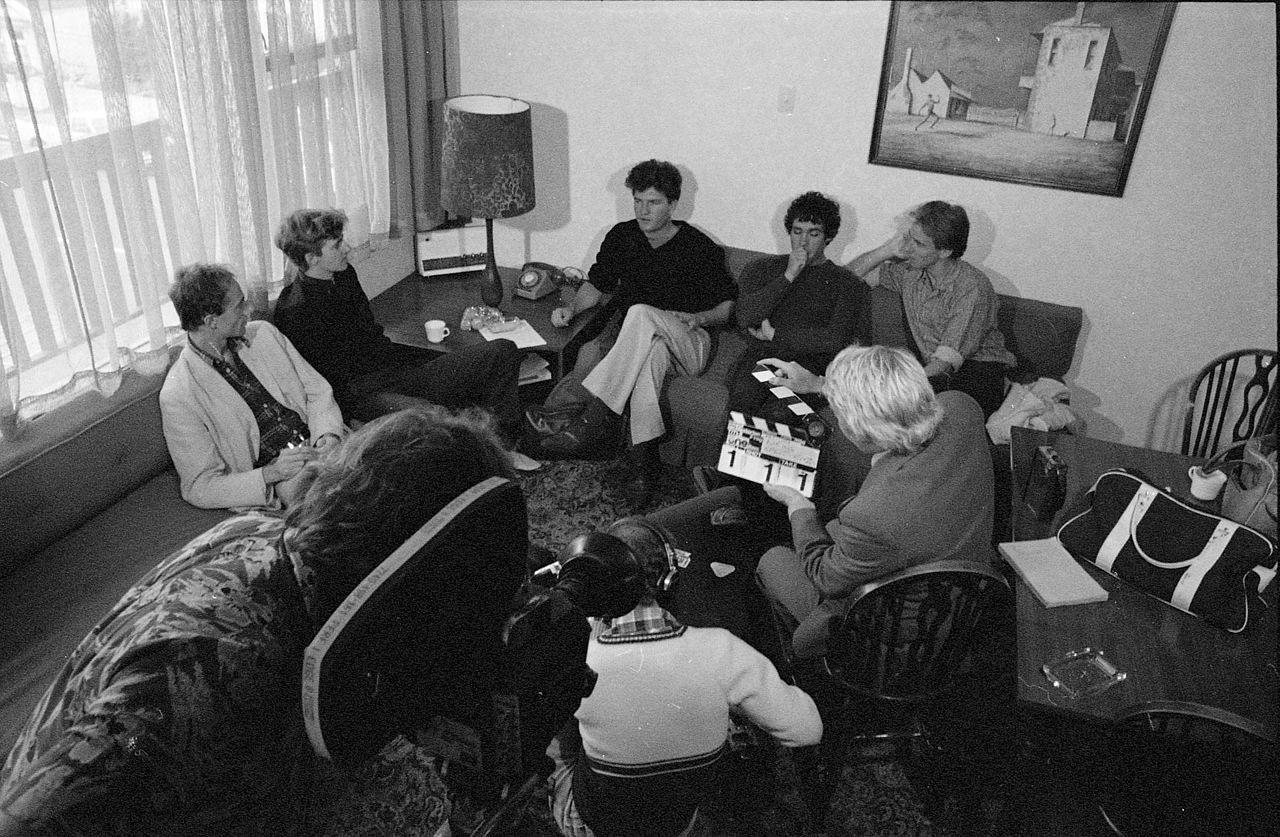Loading...

Issue 124
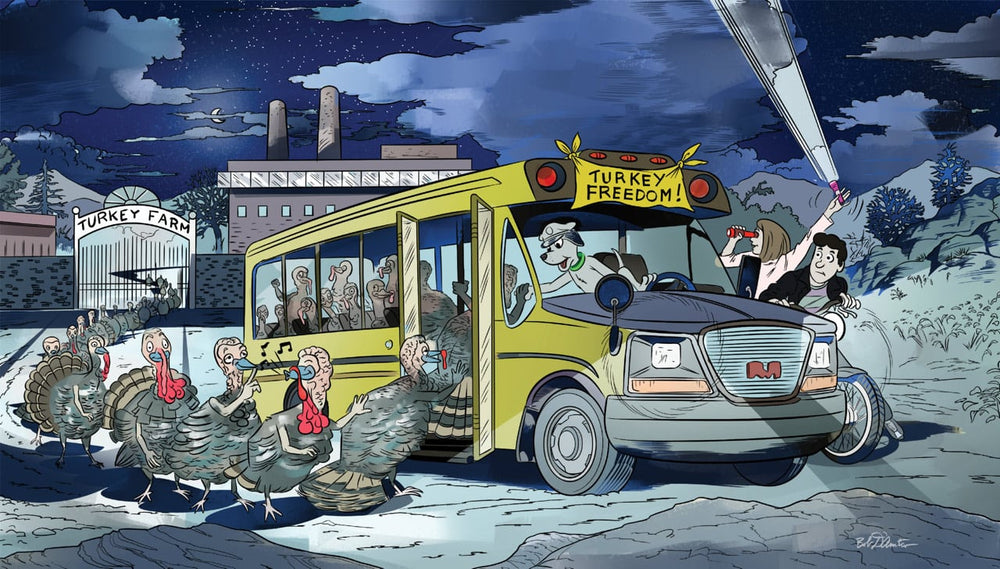
Octave Pitch and Other Notes


Shapes of Things
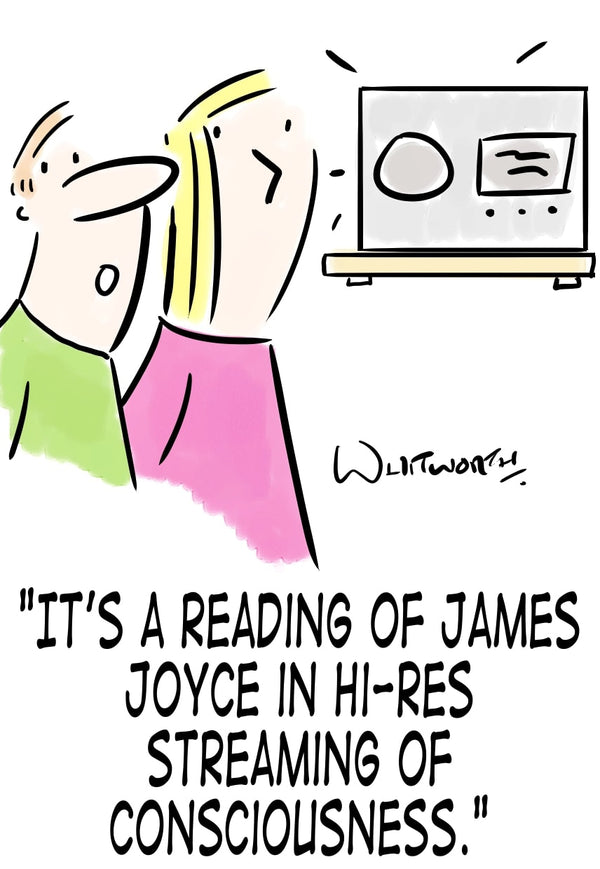
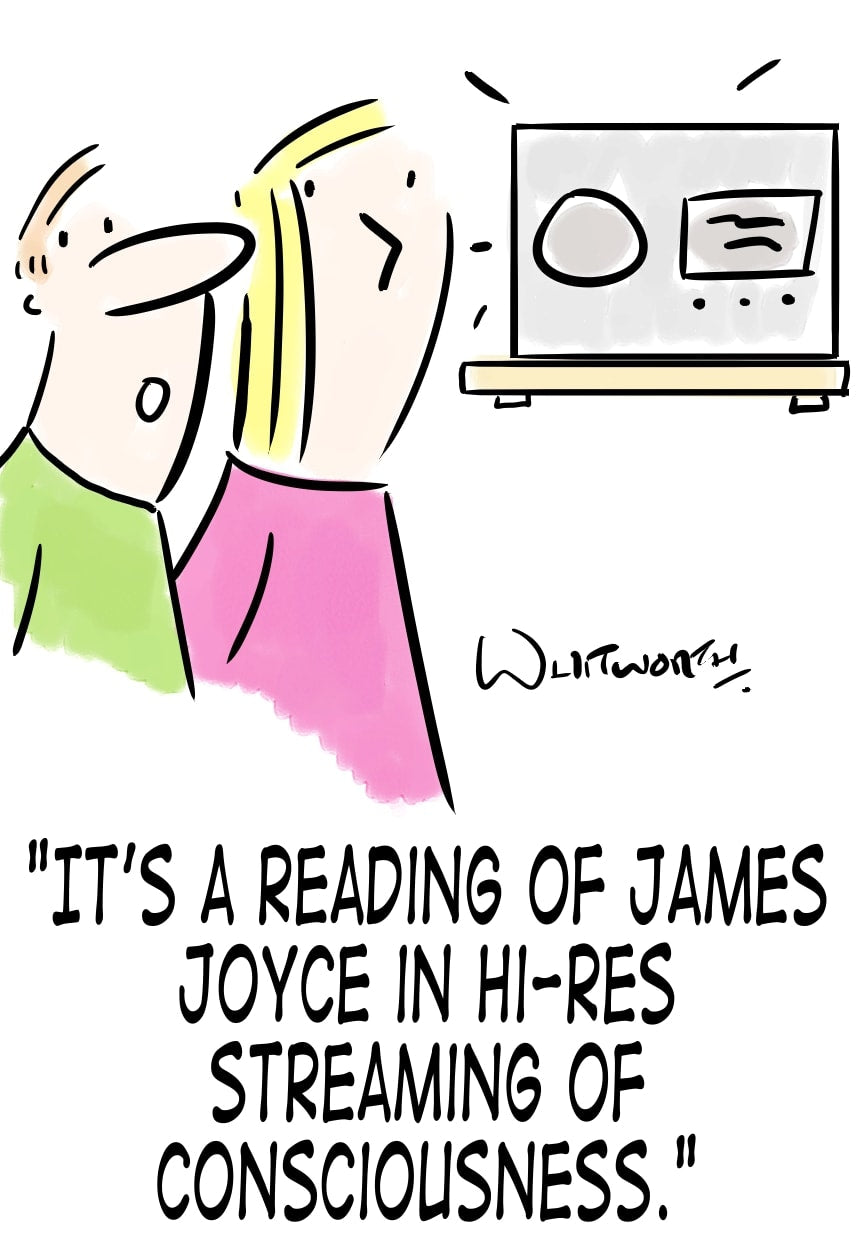
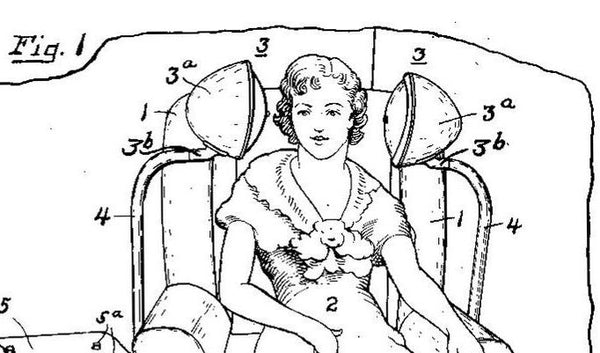
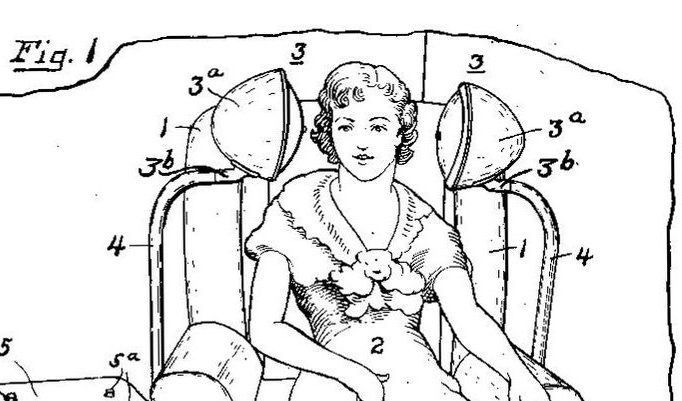
Art Goes on Record

Reel dancing! Mercury “Living Presence” stereo tape, catalog number MDS5-4. Not an easy one to find; this one’s from my collection.

Variable-speed cutting: Marie Hippolyte Rose making a record in 1878. From Sound and Hearing, 1965.

In 1974, they knew how to build receivers!

Nearfield listening at its finest. Courtesy of Wikimedia Commons/Arthur T. Cahill.

We’re still trying to figure out how this thing works. From Audio, July 1977.
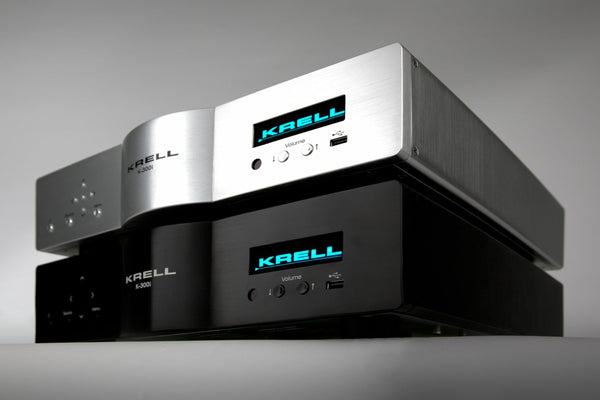
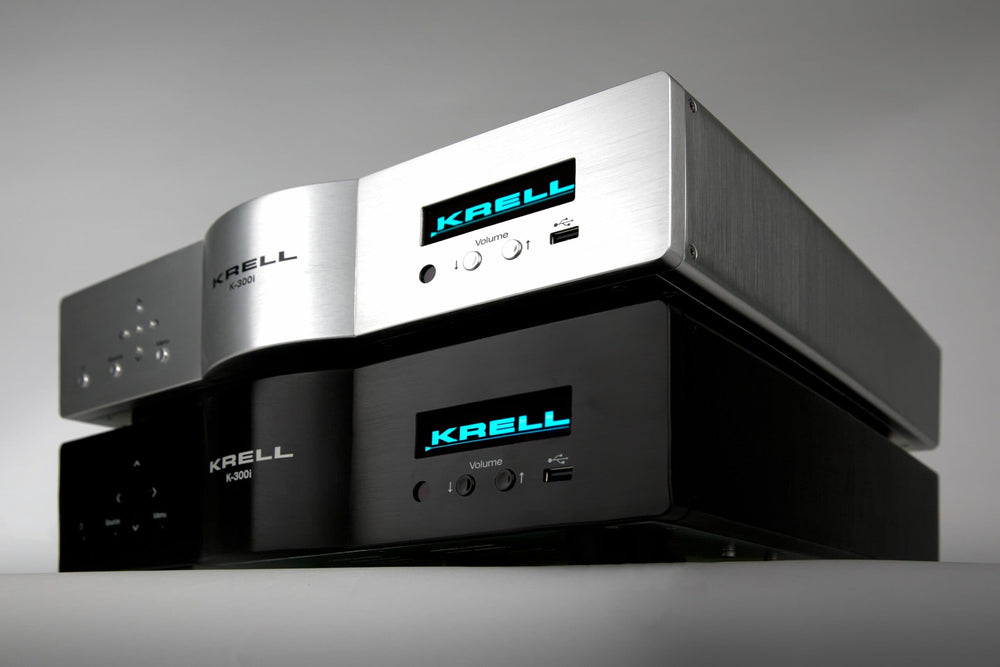
Walter Schofield of Krell Industries, Part Two
In Part One (Issue 122) we interviewed Krell Industries’ Walter Schofield about his early audio career, some of the landmark products he worked on, his ideas about the return of audio shows and more. We continue the interview here with a focus on Walter’s current work with Krell.
Don Lindich: My first experience with Krell was in the late 1980s at a high-end audio store in South Florida, where a Krell KSA-100 amplifier was driving a pair of Apogee Caliper speakers. The source was a SOTA Star Sapphire turntable playing highlights from Bizet’s Carmen from a Deutsche Grammophon LP. To this day it remains one of the best, most pure-sounding audio demonstrations I have ever witnessed, and that I remember it in such detail over 30 years later speaks to that fact! That Krell KSA-100 drove the notoriously difficult Apogee ribbon speakers effortlessly.
That Krell KSA-100 was a Dan D’Agostino design, and for a long time the names Krell and D’Agostino, both Dan and Rondi D’Agostino, were practically synonymous with each other. (Both were ousted from the company in 2009 after a takeover, and Rondi eventually returned to Krell. Dan is now president of Dan D’Agostino Master Audio Systems.) Since then, the company has gone through many changes. Given the company was once so intimately associated with Dan and his design ethos, what is the current identity for Krell? How have things changed since his departure?

Walter Schofield.
Walter Schofield: David Goodman, our current director of product development, has been with Krell for 33 years and has been responsible for many of the company’s proprietary technologies.
Our design goals are: unmatched performance, and products that are elegant in appearance, with a compelling array of features including network connectivity.
For more than three decades, Dave has been instrumental in the continuous improvement in sound quality and capabilities of Krell’s entire product line. Additionally, he designed Krell’s critically acclaimed K-300i integrated amplifier. During its development he was able to substantially reduce the output impedance, while discovering a technique for greatly reducing harmonic distortion, resulting in a much more organic and natural sound.

Blast from the past: 750MCX mono power amplifier, circa 2000s.
Applying the techniques he learned in developing the K-300i, Dave’s engineering tenacity and innovation resulted in Krell’s current XD Technology. XD stands for “Xtended Dynamics, Dimensionality and Detail.” This resulted in the creation of Krell’s new XD Series of amplifiers, as well as the ability to retrofit current Krell products with XD technology.
After earning his BS in electrical engineering from Rensselaer Polytechnic Institute, David Goodman began his career with Sikorsky Aircraft as an avionics test engineer. He then joined Krell as a staff engineer, and soon becoming manager of engineering. Goodman has grown with the firm for over three decades.
Dave currently supervises a team of engineers in the concurrent development of multiple Krell products. His design experience includes responsibility for the electrical, mechanical and software design of every aspect and type of product that Krell manufactures.
He’s the co-inventor of Krell’s Sustained Plateau Bias technology, the forerunner of Krell’s proprietary iBias technology, which Dave has implemented throughout Krell’s current and forthcoming lines of amplifiers. iBias enables an amplifier to operate at the optimal level of Class A power without the excessive heat or power consumption normally associated with typical Class A designs.

K-300i integrated amplifier in silver and black. ($7,000 – $8,000 depending on configuration)
DL: How do today’s Krell amplifiers differ from such models of the past and how have they been improved?
WS: The implementation of iBias was a big step forward in Krell amplifier design. Krell’s history is rich with breakthrough Class A amplifiers that have helped build the company’s legacy of offering what we feel to be the best-sounding amplifiers available. Many audiophiles have considered Class A technology to be the best-sounding operating state for amplifiers, however, it has fallen out of fashion because of recent demands to reduce power consumption and heat in home electronics products.
Krell took this as a challenge. The result was iBias, a patent-pending circuit that delivers Class A operation without the excessive heat and wasted energy of conventional designs. What we hear is sound that is open and unconstrained, in a manner that rivals the true sound of voices and instruments.
Plainly stated, Krell feels that Class A designs are the most musically accurate circuit topology available. They do not suffer from the inherent distortions that all Class AB amplifiers experience. In a traditional Class A design, the output transistors conduct full current at all times regardless of the actual demand from the speakers. Often, only a fraction of this power is needed to reproduce an audio signal at normal listening levels. The rest of the power is dissipated through the amplifier’s heat sinks, producing large amounts of wasted heat. With Krell’s iBias technology, bias is dynamically adjusted, so the output transistors receive exactly as much power – but only as much power – as they need. The circuit works even at extremely low signal levels.

Solo 575 XD mono power amplifier ($12,500).
Previous efforts at using a “tracking” bias to accomplish what you could call “sliding bias Class A operation,” while effective, only measured the incoming signal and set bias levels from this information. iBias significantly elevates the effectiveness of previous designs by calculating bias from the output stage and output current. This seemingly small change in topology results in a dramatic improvement in sound quality, especially midrange richness and purity.
XD is another important technology. It was introduced in2018 with the K300i integrated amplifier and subsequently rolled out in all Krell amplifiers at the end of 2018 through 2019. The reviews and customer comments have been exceptionally positive.
During the development of the K-300i we discovered we could achieve substantial sonic improvements by lowering the output impedance below traditional norms. The improvement was so substantial we decided it deserved its own, unique “XD” designation. But it was no simple matter to implement. Lowering the output impedance affects the amplifier’s stability and transient response, so each stage prior to the output stage had to be re-tuned to work optimally with the lower output impedance. One of the advantages of lower output impedance is that the amplifier exerts more control over the loudspeaker drivers, and damps unwanted vibrational modes, allowing a more accurate reproduction of the original signal.
DL: Do you get a lot of repeat business from owners of vintage Krell products? And are there any differences between a Krell purchaser of yesterday and today?
WS: The customers of today and yesterday are similar in that they seek the best-available sound quality. That said, in addition to our traditional retail business, we’re getting more business from custom integrators.
DL: Krell has several product lines, though it is best-known for its amplifiers. Tell us about your other products.
WS: In addition to mono, stereo and multi-channel power amps and stereo integrated amplifiers we offer our Illusion and Illusion II preamplifiers, Foundation 4K Ultra HD Processor for A/V systems, our Vanguard Universal DAC Source, a 4K HDR switcher.

Illusion preamplifier ($16,500).
While some products may have been on the market for an extended period, we are consistently updating and upgrading them.
DL: What is your most popular product, and why do you think it has achieved that status?
WS: The new K300i is by far our most popular product, likely because it is the first one to incorporate our XD technology (the XD nomenclature is not added to the K300i, but it’s in there). It’s also our entry-level offering, yet we feel it sounds like a much more expensive product.
DL: Home theater is a notoriously difficult area for ultra-high-end manufacturers like Krell to compete in, due to rapidly-changing technology and features like Dolby Atmos and different forms of HDR being introduced seemingly every year. For the manufacturer, it is hard to spread the development costs required when the product doesn’t sell in mass-market quantities. An expensive home theater processor can become obsolete very quickly. For example, your own Krell Foundation 4K Processor, while highly regarded, does not have Dolby Atmos, a feature that is becoming a must-have in the premium segment. Do you have a strategy for competing in the home theater category and keeping up with rapidly-changing technology?

Foundation 4K surround processor ($8,250).
WS: We have three choices – one, to not manufacture preamp/processors at all and leave that to larger companies with more resources; two, to partner with a company that we can work with to enhance their offering(s); or three, to design such products in-house. We have two in-house Dolby Atmos/DTS-X pre/pros designed and at the ready. However, as you pointed out, they can become obsolete very quickly.
Krell is looking into option two, but we will only work with an OEM/ODM (original equipment manufacturer/original design manufacturer) partner if we can truly enhance their products to achieve the sound quality that we require of a Krell component. Stay tuned!
DL: Are most of your customers 2-channel or multichannel listeners?
WS: The split is about 60/40, leaning to 2-channel reproduction. However, the home theater segment has been growing consistently over the past few years.
DL: Where are Krell products manufactured?
WS: We source the majority of our components in North America, and assemble everything in our Orange, Connecticut factory. We still source small bits from Asia; however, our focus is to bring all component manufacturing to North America with all future products, of which we have 23 introductions planned between Q1 of 2021 and the end of 2024.
DL: Have you encountered supply chain disruptions due to the pandemic?
WS: Unfortunately, yes. Our business has been trending up since the end of 2018, and we have not been able to keep up with that growth and have underestimated our needs for the components that go into Krell products. As a result, our suppliers have been scrambling to get our needs fulfilled as they ramp up for us. Combine that with parts availability issues to both them and us because of the pandemic, and it has created a perfect storm that we are not fond of.
We have always been a just-in-time manufacturer [a manufacturing method that requires quick delivery of parts and maintaining lean inventory levels – Ed.] and our lead times had been cut to two weeks in 2018 and 2019, but with our vastly increased sales and the shortages, we are running a bit behind. Our backlog has never been larger, a good issue to have in a way; however, we are asking our dealers and retail partners to be patient as we realign our resources. It’s getting better!

Illusion II preamplifier ($7,700).
DL: What does your dealer network look like these days?
WS: Many US dealer partners are committed to us, however, we have a way to go to rebuild Krell back into the iconic brand that reflects its technologically-leading nature. Our international partners feel the same: very committed to our growth; however, we will be making changes to that network as we have seen some recently-appointed partners exceed our expectations.
DL: What are the qualities you look for when establishing a Krell dealer?
WS: A sincere desire to bring the very best sound to their customers is a big one, as well as their commitment to customer service. Krell has not been the best at customer support; however, we are getting better and working diligently to enhance our customer support to the highest level in the industry. There is a long road ahead, but we like where we are and where we are heading.
DL: Do you plan on expanding your dealer network?
WS: Expansion would not be a correct term – we are seeking to reconnect with our legacy partners, and we’ve made great strides over the past two years. As we become a better partner, we expect the growth of our network to naturally occur.
During the pandemic, Krell has assembled a plan that addresses all aspects of our business, and the future looks very bright.
DL: Sadly, we do not have as many hi-fi stores as we used to, and the market is shifting to e-commerce or a blend of e-commerce and brick and mortar. For a company like Krell with premium products that are best seen, touched and heard to drive sales, how do you operate in such an environment?
WS: Our goal is to primarily partner with brick and mortar and custom integrators. That said, there are a couple of e-tailers that hold to manufacturers’ pricing policies and have a wide audience. In our opinion, their reach brings top brand names to so many end users, which we’ve seen to enhance sales for all partners, so we will not rule out potential partnerships in this area.
DL: If someone wants to purchase a Krell product but there is no dealer in their geographical area, can they still be accommodated?
Our dealer partner agreements are sacred to us, and if a customer contacts us, we will put them with our nearest partner in their geographic region. If the customer needs to hear a product and is nowhere near a dealer, we recommend they contact our sole online partner.
DL: What do you see as the future for Krell?
Krell has embarked on a mission with renewed vision, the enthusiastic support of a fully-engaged engineering department, and enterprise-wide support to develop as many new, technologically-advanced products as possible. Revenues were not only dramatically increased in 2019 and 2020; a plan was enacted to ready multiple product introductions to satisfy the pent-up demand for Krell products. We’ve also implemented infrastructure enhancements for customer service, manufacturing and operations.
We’re also planning marketing initiatives to reach a wider audience including enthusiasts around the globe, as well as high-net-worth individuals. Krell recognizes the necessity in reaching wide audiences of various age groups who are not aware that high-quality immersive music and theater experiences are available in their homes. Krell’s retail partners also recognize the iconic nature of the brand and are eager to play their integral role as well. I believe we are far from realizing our full potential.


AES Show Fall 2020, Part Two
I’d like to commend the Audio Engineering Society (AES) for the depth and choice of topics that online attendees of October’s AES Show Fall 2020 were offered. The tent-pole attraction was unquestionably the “7 Audio Wonders of the World” series, which gave virtual studio tours of some of the audio world’s best facilities. The series kicked off with a tour of Skywalker Sound. Let’s look at more of what AES 2020 had to offer.
Galaxy Studios Tour
The second stop on the “7 Audio Wonders of the World” tour took us to Belgium, home of Galaxy Studios. The brainchild of musician/producer Wilfried Van Baelen and his brother, engineering design whiz Guy, Galaxy Studios is the inventor of Auro-3D immersive audio processing and a prime example of how innovative engineering can influence aesthetic imagination.
Galaxy Studios took its name from the custom Galaxy analog organ that Guy built for his brother more than 40 years ago to take on concert tours. Envisioning a self-contained studio where Wilfried could create, record, and experiment with music and sound without time constraints, Wilfried and Guy built the original Galaxy Studios in 1980 over a chicken coop on family owned-land. Within one to two hours from Paris, Amsterdam and Cologne, Galaxy’s reputation for cutting-edge gear, excellent sound and the demand for Wilfried’s finely-attuned ear made the initial studio a success. However, Wilfried wanted to take the concept to the Nth degree and in 1990 a greatly expanded facility, designed by Guy, was launched.
Comprising 15 separate concrete bunkers all suspended on a series of isolation springs (each bearing over three tons of weight), the Galaxy Studios’ rooms each have a specially-designed acoustic environment separated by multiple 330-lb. doors, resulting in an isolation value of greater than 100 dB between each room at < 3 Hz (in low-frequency isolation) – making these among the most silent rooms on the planet.
The Van Baelens designed every Galaxy room for maximum interactivity. Wired cable connections and special 4-1/2-inch soundproof glass panels (weighing more than a ton each) allow for a clear view line of sight through multiple rooms. Guy needed to design a special hydraulic lift machine to mount each of the panels.

The Galaxy Studios immersive audio theater.
Galaxy’s Auro-3D signature is probably Wilfried’s crowning achievement. Auro-3D is an immersive sound mixing system that processes the direct overhead “Voice of God” channels (as the surround-sound height channels are known), to seamlessly blend with an immersive audio system’s 7.1 or 9.1 front and rear left and right, and center channels. Auro-3D creates a correct, coherent sound field for the vertical axis for a natural sonic 3D effect, as opposed to other virtual audio systems that only function on the horizontal axis. All of Galaxy’s control rooms have Auro-3D capability.
Wilfried explained that Auro-3D maintains the integrity of the surround mix across all types of surround monitoring systems when collapsed to smaller-channel-count formats such as 9.1, 7.1, 5.1 or even stereo.
Galaxy also commissioned the first custom console built for 3-D audio from AMS Neve in 2007. It has 500 channels (!) with 96 kHz sampling rates and 250 channels with 192 kHz sampling rates. Galaxy prefers custom built Genelec monitor speakers for their Auro-3D rooms. Their 3D-audio cinema mixing room comprises a 180-seat theater and dubbing stage with a 45 foot by 9 foot 4K projection screen and Meyer Sound loudspeakers. The console is on a platform with a hydraulic lift that allows it to be elevated or sunk to floor level, enabling the mixing engineer to hear the mix literally from different locations to assess what the 3D mix would sound like from a theater’s floor or mezzanine, for example. The cinema mix room’s co-designer was former Galaxy Chief Technology Officer Robin Reumers.
Galaxy’s mastering room was completed in 2002. The console offers +30 dB headroom with an astonishing zero (!) measurable distortion. Bob Ludwig was reportedly so amazed at its design that he had it re-created at his Gateway Mastering Studios.
Guy Van Baelen also designed Galaxy’s innovative energy-neutral HVAC system. Pumps and a boiler powered by running groundwater fuel an electric generator and the air conditioning and heating systems; it is a green-energy engineering marvel.

There’s no lack of space at Galaxy Studios.
The incredible architectural and acoustic design aspects of Galaxy Studios notwithstanding, their control rooms all contain pretty much everything one would ever need equipment-wise, with custom AMS Neve consoles (including the first Capricorn console ever built), Neve preamp racks, Tektronix, Fairchild and Pultec vacuum tube compressors and EQs, state-of-the-art digital gear, and a collection of mics from Neumann, Telefunken, AKG, Beyer and Schoeps that would be the envy of any studio. They also have 48-track Studer analog tape recorders, digital tape and hard-drive recording machines, Pro Tools HDX digital workstations, and a full complement of film and HD video equipment.
Galaxy also houses Wilfried’s personal keyboard collection, including Guy’s hand-built analog Galaxy and digital Atlantis organs and a mind-boggling selection of vintage Roland, Yamaha, Moog and Oberheim synthesizers and grand pianos. They also have an extensive selection of vintage and modern guitar amps.
Galaxy’s superb acoustic environments made it the studio of choice for George Massenburg to record his Superior Drummer samples collection and for Yamaha to record the piano samples for its electric piano models and synthesizers. Artists such as Santana, Rammstein, Mary J. Blige, Lauryn Hill and others have recorded over twenty platinum records at Galaxy. And now, Galaxy’s Auro-3D technology has made the facility a natural for audio production for movies.
George Lucas used Galaxy for Red Sails, the first movie mixed in 3D, in 2011. Galaxy has a relationship with DreamWorks and has facilitated complex mixes for blockbuster features like Jumanji, Spider-Man 2, John Wick, Transformers, Blade Runner 2046, Jason Bourne and countless others.
In keeping with cultural tradition, Galaxy also has its own band of Belgian beer available at its fully stocked bar. Sounds like an unforgettable European experience!
The Trinnov Optimizer, and JBL 3-Series MkII Studio Monitors
Dale Pro Audio hosted a number of online product showcases including two from Trinnov Audio and Harman/JBL that addressed the issues of monitoring and mixing in sub-optimal environments.
Trinnov’s Optimizer software is used in its Altitude32 and Altitude16 audio/video preamp/surround processors. Working in conjunction with DSP-equipped loudspeakers, Optimizer measures the acoustic response of a particular room and the placements of the speakers in the room and uses proprietary algorithms to calculate, calibrate, and fine-tune the speakers for time, level, and EQ alignment as well as correct phase and group delay, with optimization of all the active crossovers in a system. The PC-based units can store multiple rooms, mix positions, and different engineer preferences in memory. Engineers who often travel to work on projects in remote locations or even mixed in residences or places other than a professional studio might find Optimizer invaluable.

Trinnov Altitude 32 Reference Immersive Audio Processor.
Harman’s latest JBL 3-Series MkII compact studio monitors address the need for such products because of the growth of home studios. Harman’s David Tewksbury explained the engineering behind the 3-Series MkII, much of which is based on JBL’s M2 Master Reference Monitors. 3-Series MkII loudspeakers are specifically designed to deliver a wider and deeper “sweet spot” in less-than-ideal listening situations, and deliver transparent sound at higher output levels. These attributes also make the 3-Series MkII a good choice for mixing immersive audio on a budget.

JBL 3-Series MKII loudspeakers and subwoofer.
The Village Tour
While Skywalker Sound and Galaxy Studios’ gear, technology, and architectural achievements create a serious “wow” factor, West LA’s The Village, number three on AES’s “7 Audio Wonders of the World” tour, has a mojo that comes from an alchemy of artistic vibes, their rock and roll recording aesthetic, and an uncanny streak of lucky breaks and timing.
The Village was founded in 1968 by Hormel meat packing heir Geordie Hormel as a private studio (later to become the current Studio A). The Village went commercial soon after, giving birth to landmark recordings like the Rolling Stones’ Goat’s Head Soup, Aja by Steely Dan, and Bob Dylan’s Planet Waves. Manager Tina Morris recalled that Tom Petty and the Heartbreakers decided to become a band after a jam session in Studio A, and they went on to record Southern Accents there.
Studio B has also been the site of many hit records including Supertramp’s Breakfast in America, Frank Zappa’s Joe’s Garage, and albums from artists such as Pink and Miguel. The studio’s many film and TV mixing projects include Crazy Heart, The Hulk, Finding Dory, and Nashville.
The Village’s largest room, Studio D, is best-known for being built at the request of Fleetwood Mac in order to record Tusk. Other artists preferring Studio D include Eric Clapton, Weezer, Elton John, Sting and Selena Gomez. Bradley Cooper’s A Star is Born and its Oscar-winning “Shallow” was recorded in Studio D, and scenes of Cooper’s and Lady Gaga’s performances were filmed there.

The Village’s Studio D control room.
The smallest room, Studio F, is used mostly for overdubs, voiceovers and podcasts. Even so, Studio F fans include Lady Gaga (The Fame), Janet Jackson (Danita Jo) and Melissa Etheridge. It also serves as a control room for the adjoining Moroccan Ballroom, which is used to host and record live events, streaming concerts, and private parties.
The equipment in the studios sport Neve 88R and Avid S6 consoles (with a vintage Neve 8048 in Studio A) and all have Pro Tools HDX digital audio workstations, Ampex ATR 102 recording decks, Augsberger speakers, and a host of vintage and modern outboard gear.
Built in a former Masonic Hall, The Village’s rooms are key to its funky vibes. The Tahiti Booth (named for its tropical decorations) is a large isolation booth built for Stevie Nicks, and is equipped with a movable ceiling and an echo chamber copied from Capitol Studios. The aforementioned Moroccan Ballroom has a Middle Eastern décor and it inspired John Mayer’s writing and recording of Continuum as well as Coldplay’s “ A Sky Full of Stars.” Chris Martin’s piano part was played on Oscar Peterson’s personal 6-foot Steinway baby grand piano located in the studio.
The old linoleum tile floor and multiple reflections inherent in the Moroccan Ballroom and in Studio D give them a unique character that has become part of the highly sought “Village Sound.” In a Q&A with The Village’s owner, Jeff Greenberg, Tina Morris, and producers T-Bone Burnette, Larry Klein, and Ross Hogarth, the latter three waxed rhapsodically about the unique sound of The Village. One of the techniques deployed by both Burnette and Hogarth was to set up drums in front of the live room and open a door to leak out into the larger Studio D room and mic it as an echo chamber. Burnette also cited Studio D as creating the sound of his Grammy Award-produced Raising Sand by Robert Plant and Alison Krauss, The Union by Elton John and Leon Russell, and the soundtrack for O Brother Where Art Thou?.
Hogarth and Klein explained how the vibe and history of The Village was inspiring for Hogarth’s work with Van Halen and Keb ‘Mo and Klein’s with Shawn Colvin and Joni Mitchell – which was so crucial for creating the intangible magic that was impossible to replicate in a plug-in.
Greenberg also related how he was approached in the early 1990s by Hormel’s daughter to take over and restore The Village. Once Geordie Hormel relocated to Arizona, it fell to Greenberg, with the help of legendary producer Al Schmitt, to bring The Village back to its former glory. However, The Village’s close association with classic rock bands became a marketing albatross with young grunge and alt-rock bands who didn’t want to record “where their parents’ music was made.” Greenberg credits Billy Corgan with bringing street credibility back to The Village when the Smashing Pumpkins recorded their multi-platinum Mellon Collie and the Infinite Sadness there.
In the final AES Show Fall 2020 installments we’ll cover the highlights of the final week and talk about the other stops on the “7 Audio Wonders of the World” tour, including Blackbird, Abbey Road Studios, Capitol Studios, and United Recording in a separate article for a bang-up conference finale.
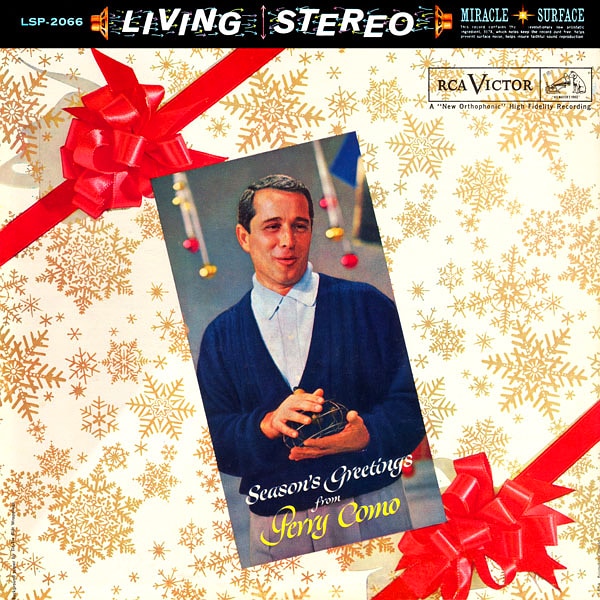
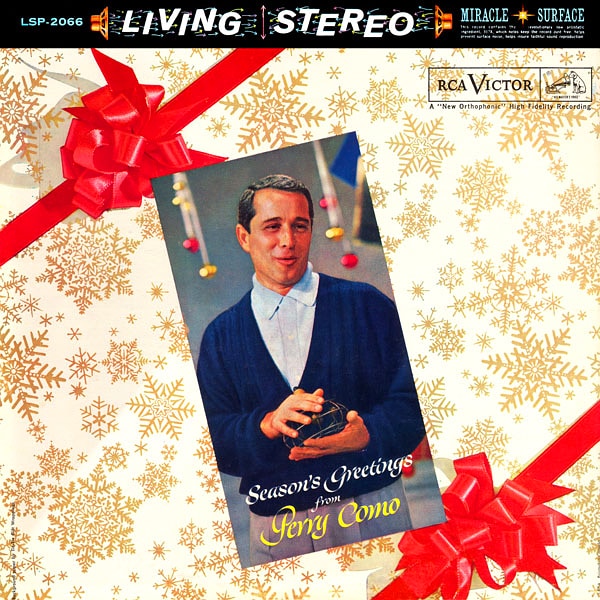
Four Classic Holiday LP Reissues From Sony Legacy
We’re taking a break from the usual new release record review format this issue to focus on some holiday classics, just in time for the holiday season. My wife (heretofore known as “The Boss”) deems it a strict protocol that the house gets decorated for Christmas the day after Thanksgiving, so mid-November is traditionally about the time that holiday music starts pouring over the airwaves at my house, anyway. Actually, it’s a bit worse than that this year, in particular; I just had a surgical procedure done on my elbow that precludes me from lifting anything (heavier than a pint glass, nudge, nudge!) until very close to New Year’s’ So the Christmas tree and all the boxes of decorations have already been brought out on November 1st, prior to my procedure. It’s definitely surreal, almost like being at home, but also like being at just about any department store this time of year.
Gabby Gibb (no relation) of Sony Legacy reached out to me with an offer of new 180-gram vinyl reissues of ten classic Columbia/RCA and associated label Christmas albums from a range of artists like Johnny Mathis, Andy Williams, Elvis, and so forth. Always willing to prostitute myself for the offer of promotional vinyl, I jumped at the chance, and chose four titles that played virtually nonstop in my home as a kid in the early sixties. I still have this kind of nostalgic memory of Christmases from long ago, although, if truth be told, it was nowhere nearly as idyllic as my memories would have me believe. I’m kind of like an android who’s had my memories programmed into my storage banks, but as time has gone on, definitely has begun to question the validity of those memories. Regardless, hearing artists like Johnny Mathis and Elvis sing classic Christmas tunes really helps to keep me believing that those memories were (are) real.
I grew up in a fairly spartan setting in a small, rural North Georgia town, but one thing we did have was a fairly large — if also, fairly old — Philco tube amped stereo console. Which produced surprisingly great sound, especially from the built-in FM tuner and from LPs. My mom had a pretty decent collection of LPs from the fifties and early sixties, and the holiday season had her pulling out records from Johnny Mathis, Elvis, Perry Como, and Andy Williams, among others. While over the years, my tastes in music veered heavily into the rock and roll direction, I still find the Christmas music of my childhood very comforting. So I chose four of the available Sony Legacy LP titles that are either exact replications of music I’m infinitely familiar with (Johnny Mathis, Perry Como), or are collections (Elvis, Andy Williams) that incorporate much of the music from the classic LPs of yore. In retrospect, I probably should have chosen the Phil Spector album along with these, as it (with Elvis, of course) would have given my review a little bit more rock and roll street cred. Maybe next time!
Although these releases are 180-gram LPs, that are (from my observations) pressed on decent vinyl, they all retail for somewhere in the neighborhood of about $27 each — these are not super-premium releases, and the packaging definitely reflects that. The sound quality was consistently good across the board, although there’s no clear information regarding the provenance of the source tapes for the pressings. The LPs drop-shipped from a location near Nashville, and I wouldn’t be surprised if they were also pressed at that facility. So, 1) I’m pretty certain they’re probably not AAA (strictly all-analog throughout the chain) pressings, and 2) I have no way of determining where the LP pressings were sourced from. In this day and age of most LP pressings being sourced from digital masters, that’s pretty much come to be expected, anyway. The LPs had uniformly very clean and glossy surfaces, and exhibited very little surface noise.
The other area in which the LPs fell a bit short of super-premium territory was in the packaging; the sleeves are printed on substantial and fairly glossy paperboard that’s of decent weight, but the cover images are obviously sourced from digital scans, and are not particularly of the highest resolution; the Johnny Mathis and Elvis albums were much better in this respect than the other two. A couple of the LPs had very slight warps that didn’t impact playback too much; I use a record clamp, so the warps were generally only noticeable on one side. Pressing plants need to not use the “shrink wrap of death” that often assists in warpage more than any other single factor; I use a razor knife to open LP jackets, and even I had difficulty getting the plastic wrap off these new LPs. Regardless, it’s still really great and nostalgic to have the LPs here in my collection after all these years.
All my listening was done using my Pro-ject Classic turntable setup with its Hana SL moving coil cartridge, playing through the PrimaLuna EVO 300 tube integrated amp (EL 34 tubes!) and my Zu Omen loudspeakers. Let me tell you, nothing helps ring home the holidays like classic performances over tube electronics! I’ve heard most of these performances countless times, and in a variety of formats, but in general — and despite a few hiccups here and there — I don’t really think they’ve ever sounded as great as they do on these new LPs. Happy Holidays, ya’ll!

Johnny Mathis — Merry Christmas
Johnny Mathis’s Merry Christmas is definitely — in my book at least — the ne plus ultra of classic holiday albums. Recorded in 1958, it was Johnny’s first and best foray into a holiday-themed album, and immediately gained instant popularity with the record-buying public. The album made it to number three on the US Billboard charts, going gold in the first year of release, and charted and sold very respectably worldwide, especially in the UK. Over the years, Merry Christmas has shown its continued popularity and staying power, going five-times platinum and selling over five million copies. Easily maintaining its position on the list of biggest selling Christmas albums of all times, the record has charted 28 different times over the years since its release.
Merry Christmas is a mixture of the sacred and the secular, with Side One featuring Johnny Mathis’ inimitable voice as he takes on classic Christmas pop tunes like “Winter Wonderland,” “The Christmas Song,” “Sleigh Ride,” “I’ll Be Home for Christmas,” “Blue Christmas,” and of course, “White Christmas.” Nat King Cole might get the nod for “The Christmas Song,” and Bing Crosby for “White Christmas,” and who would deny Elvis the crown for “Blue Christmas,” but Johnny’s rendition of all three places him squarely at number two (for me, at least) on each of those tunes. And he imbues them each with his own special vocal stylings that distinguishes his version from those of the other classic Christmas crooners. “Winter Wonderland” and “Sleigh Ride” are definitive readings of each tune, and for me, if I ever feel the need to get somewhat weepy/nostalgic during the holidays, no one can touch the tear-jerk level he brings to “I’ll Be Home for Christmas.” It really gets me, every single time.
Side Two is dedicated to traditional Christmas hymns, with Johnny once again offering near-definitive versions of “O Holy Night,” “What Child is This,” “The First Noel,” “It Came Upon the Midnight Clear,” and “Silent Night, Holy Night.” I don’t think anyone can approach Johnny’s heartfelt renditions of these sacred tunes; the level of power and emotion he instills them with just completely gets me in a way that isn’t quite the same with other performers. A long-time family favorite is Johnny’s version of “What Child is This,” where he powers through the sacred variant of “Greensleeves” with incredible emotion; upon hearing this song for the first time, my five-year-old daughter remarked, “you know, he really shouldn’t belt it out like that!” We’ve been laughing about that moment ever since. The only secular tune that interrupts an otherwise completely sacred Side Two is “Silver Bells,” the Ray Evans/Jay Livingston classic that was definitely my favorite Christmas song as a small boy. Of course, I don’t think anyone else’s version can touch Johnny’s for the very personal emotion reading he gives the song.
The 180-gram LP pressing of Merry Christmas was about as pristine as could be expected, with virtually zero surface noise, and nary a click or pop. Maybe it was partially due to that warm tube afterglow, but the sound quality was so off-the-charts good with this release, I’d swear it was taken from an analog master. This is a classic album, with classic readings of songs that are inimitably Johnny Mathis. Very highly recommended.
Sony/Legacy Recordings, 180-gram LP (download/streaming [24/96] from Qobuz, Tidal, Amazon Music, Google Play Music, Spotify, YouTube, Apple Music, Pandora, Deezer, TuneIn)

Elvis Presley — The Classic Christmas Album
The Classic Christmas Album was compiled in 2012 from two different albums; 1957’s Elvis’ Christmas Album (his first holiday-themed album), and 1971’s Elvis Sings the Wonderful World of Christmas. Elvis’ Christmas Album is the biggest selling Christmas album of all time, selling over three million records at the time of its release; a 1970 reissue of the same title was certified diamond (ten million units). Elvis has sold over 22 million Christmas albums — not too surprising, since he’s the single biggest selling artist of all time, having sold over a billion records worldwide.
Not surprisingly, the songs from the 1957 release are the real reason for getting this LP, but that’s not to say that the 1970 tracks are without merit; there are definitely some great tunes there as well. But the ’57 songs are much more well recorded; a youthful Elvis gives a much more enthusiastic performance, and there’s less of the Vegas headliner Elvis so in evidence in his later years. Probably part of the reason for this compilation’s song selection has to do with the makeup of the original 1957 sessions, which presented one side of secular Christmas songs, with the second side consisting of all sacred hymns — four of which weren’t really holiday-oriented at all. So this LP gives you the best of the 1957 sessions — which are absolutely great, and the real reason to get this LP — along with some 1971 filler. Which gives you some pretty entertaining, if not quite as energetic, performances of the music.
Side One kicks off with two tunes from the ’57 sessions, “I’ll Be Home For Christmas” and “Blue Christmas,” which I’d absolutely rate as the definitive performance of this tune. You then segue into an extended montage of 1971 Elvis, with tunes like “Winter Wonderland,” “The First Noel,” “Wonderful World of Christmas,” and “Holly Leaves and Christmas Trees.” Elvis gives serviceable performances here, and maybe he’s phoning it in, but trust me, the best of 1971 is still to come. The tune that makes the 1971 release absolutely worthwhile is “Merry Christmas Baby,” where Elvis seems much more invested in what’s going on, and there’s some really excellent guitar work from James Burton, including a scorching solo that’s the song’s centerpiece.
Side Two kicks off with the last of the 1971 sessions, the highlight of which is “If Every Day Was Like Christmas,” which highlights a really soulful lead vocal from the King, along with great backing vocals from the Jordanaires and the Imperials. We then shift back into 1957, where the rest of Side Two features the classic material from that first album, including rockers like “Santa Bring My Baby Back to Me” and my personal favorite, “Santa Claus is Back in Town.” Elvis is coming down your chimney, but he “Ain’t got no reindeer…got no pack on my back…Santa Claus is coming…in a big black Cadillac!” Elvis effectively delivers classics like “White Christmas” and “Here Comes Santa Claus,” and he also provides soulful interpretations of the two sacred Christmas hymns, “Silent Night,” and “O Little Town of Bethlehem.”
This LP package is probably the most perfectly realized of the four albums reviewed here; the cover artwork is really nice and crisp, with good color saturation, and there’s even a printed inner sleeve with song lyrics. The LP was almost perfectly flat, and the surfaces were pristine, with very little surface noise. Yes, there’s some filler here, but overall, Elvis’ The Classic Christmas Album is a worthy addition to your holiday collection. Recommended.
Sony/Legacy Recordings, 180 Gram LP (download/streaming [16/44.1] from Qobuz, Tidal, Amazon, Google Play Music, Deezer, Apple Music, Spotify, YouTube, TuneIn)

Perry Como — Season’s Greetings from Perry Como
My mom — and my wife’s mom — both loved Perry Como. As a teenager, I jokingly referred to him as Perry Coma, because his music might definitely drowse you out. Don’t let his seemingly complacent demeanor fool you; I’ve seen some videos of Perry Como from back in the day that lead me to believe that he was less of the mild-mannered, MOR crooner as he’s portrayed, and maybe a whole lot more of a ladies’ man. Regardless, I have definitely developed much more of an appreciation for his vocal stylings with holiday songs over the years, and his velvety-throated voice is a perfect delivery vehicle for all of the great songs here. Along with Johnny Mathis’ Merry Christmas, this 1959 album, Season’s Greetings from Perry Como, is the only other of the four LPs I received that’s presented in its original catalog form. The original RCA Living Stereo title was his first holiday album, and one of his first albums to be recorded in stereo. This new LP represents the first repressing of the album in over 35 years.
Side One is the more secular side, and kicks off with Perry Como’s signature holiday hit, “(There’s No Place Like) Home For The Holidays”; it’s an undeniable classic and a perfect song for the season, and shows up on countless holiday collections. He follows with really stirring renditions of “Winter Wonderland,” “Rudolph The Red-Nosed Reindeer,” “The Christmas Song,” and “Santa Claus is Coming to Town.” Side One closes with Como’s version of Irving Berlin’s classic “White Christmas;” he’s in excellent voice here, and really gives Bing Crosby a run for his money on this track.
Side Two consists of mostly classic Christmas carols and hymns, and opens with a rousing “Here We Come A-Caroling/We Wish You a Merry Christmas.” Up next is an equally great “God Rest Ye Merry Gentlemen,” which is then followed by the sacred hymn “O Holy Night.” The remainder of the album features Perry Como’s narration of “The Story of the First Christmas,” which features vignettes of the songs “O Little Town of Bethlehem,” “Come, Come, Come to the Manger,” “The First Noel,” “O Come All Ye Faithful,” “We Three Kings of Orient Are,” and concludes with “Silent Night.” The entire album features backing vocals from the Ray Charles Singers, but “The Story of the First Christmas” really highlights their contributions. This is a great tune to share with your children.
Even though this album probably shows its age a bit more than the others here, Perry Como is in great voice throughout, and many of the songs here are classics. This LP is superb; the pressing was perfectly flat, while the surfaces displayed an almost indiscernible level of surface noise. Highly recommended.
Sony/Legacy Recordings, 180-gram LP (download/streaming [16/44.1] from Qobuz, Tidal, Amazon, Google Play Music, Pandora, Deezer, Apple Music, Spotify, YouTube, TuneIn)

Andy Williams — Personal Christmas Collection
The golden voice of Andy Williams is almost right up there with Johnny Mathis in my memories of Christmases past; his music played a lot in my home as a child, and if it wasn’t his classic holiday offerings, it was “Moon River.” This LP, Personal Christmas Collection, was compiled in 1994 from his three Christmas albums on the Columbia label, 1963’s The Andy Williams Christmas Album and 1965’s Merry Christmas, along with three songs from 1974’s Christmas Present. Both of the sixties albums are undeniable classics; The Andy Williams Christmas Album made it to No. 1 on the Billboard charts upon release, reaching gold record status in its first year and eventually going platinum a couple of decades later. Merry Christmas would also reach the No. 1 position on the charts, also eventually going gold, and then later platinum. While his first two Christmas albums were mostly secular offerings that featured some of his most memorable holiday songs, Christmas Present was almost completely a collection of sacred music.
Personal Christmas Collection opens Side One with “It’s the Most Wonderful Time of the Year,” which is far and away Andy Williams’ signature Christmas song; it makes it onto just about every collection of holiday crooners you’re likely to find. In January, 2020, it landed again at No. 7 on the Billboard charts, and became Andy Williams’ highest charting single of all time! The hits just keep on coming, with “My Favorite Things” — which is the subject of a fair amount of scholarly debate as to whether or not it actually is a holiday song — clocking in at number two on Williams’ list of most memorable songs. Regardless, he definitely made this song his own, and he definitely helped confirm its acceptance into the canon of secular holiday pop music. Following is another pretty great rendition of Mel Torme’s “The Christmas Song (Chestnuts Roasting By An Open Fire)” — again, I’d easily rank Andy Williams’ version in the top five of classic versions. And he helped to popularize “The Bells of St. Mary’s,” a 1920’s pop song that never quite took off until Williams’ owned it in the sixties. The other big Side One hit is Andy’s take on “Winter Wonderland;” he has a very joyous, upbeat approach that rivals Johnny Mathis’ version on my list, and is definitely a worthy alternative.
Side Two of the LP opens with Williams’ take on “Sleigh Ride,” which is also a classically enjoyable rendition of the Leroy Anderson tune; the chorus chants “jing-a ling, jing-jing-a ling” throughout, and it’s a startling contrast to Johnny Mathis’ version. We also get fairly classic versions of “Silver Bells” and “White Christmas,” although the two other big highlights for me on this side of the album are “Christmas Bells,” which is Williams’ fabulous 1974 take on “Carol of the Bells.” Also, “Happy Holiday/Holiday Season,” the Irving Berlin/Kay Thompson medley that Andy Williams has made into a Christmas classic; his version is the one you generally associate with the tune. The classic sacred carols “Hark the Herald Angels Sing” and “Silent Night” fill out the proceedings.
The sound quality of Personal Christmas Collection was very consistently good, although the LP had probably the worst warp of any of the group, and there was a fair amount of surface noise on this particular pressing. A deep cleaning of the LP could help to rectify the noise situation. The record jacket image quality was also easily the worst of the bunch; the album cover image scan came from what must have been fairly low-quality artwork that was probably prepared for the much smaller CD format (the compilation came out in 1994, so there likely was never an LP release with correspondingly larger artwork). At the very least, when enlarged to LP size, the resolution is not at all good — there was probably little that could be done to improve upon the situation. Regardless, it’s very unlikely that you’ll ever encounter this LP in any other vinyl form, so I’d still grab one if you’re at all a fan. Recommended.
Sony/Legacy Recordings, 180-gram LP (download/streaming [16/44.1] from Qobuz, Tidal, Amazon, Google Play Music, Deezer, Apple Music, Spotify, YouTube)
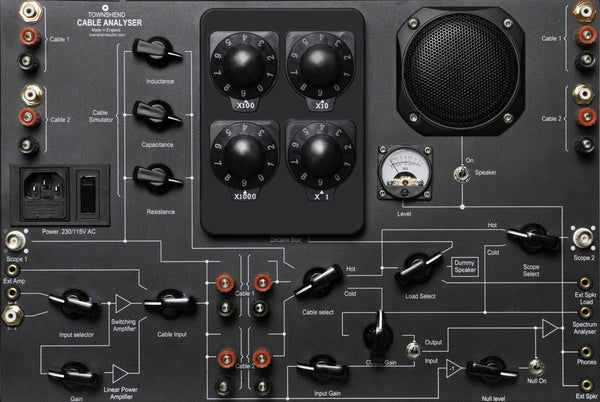
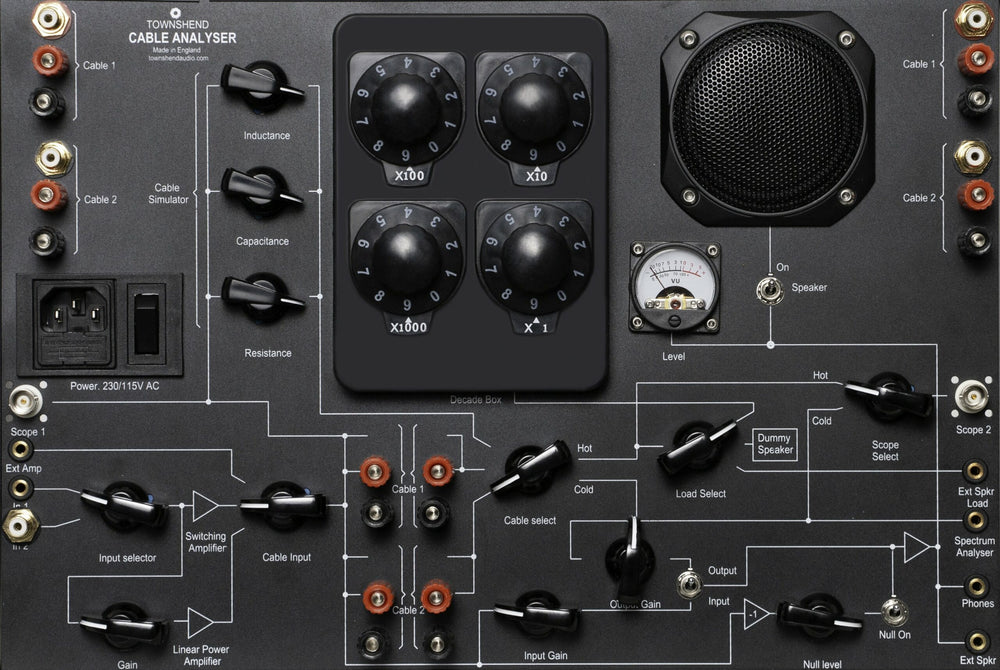
The “Sound” of Speaker Cables: an Analysis
From time to time Copper offers guest articles from audio manufacturers and others in the industry. These viewpoints are their own and we publish them in the spirit of providing information from various perspectives, and encouraging discussion and even debate.
Max Townshend is the CEO of UK-based Townshend Audio, manufacturer of isolation devices, electronics and cables since 1975. The idea that different cables can sound different in an audio system has been a source of debate and controversy for a long time. Many audiophiles, and yes, manufacturers including Townshend, insist that different cables can make a difference in an audio system. Others dismiss this as marketing hype or snake oil. Here, Max Townshend describes an experiment for identifying differences between speaker cables.
To Ascertain By Measurement Why Various Speaker Cable Geometries Sound Different
ABSTRACT
This paper describes a simple experiment to identify the performance of a number of different speaker cables by measuring the “error” introduced into an audio system by each cable, i.e., the voltage drop between the amplifier and the speaker. The signals used are both white noise (https://en.wikipedia.org/wiki/White_noise) and music.
The results show that the principal factor determining the error of a cable is its geometry. Cables with very widely spaced conductors have the greatest error, closer-spaced conductor cables have less error, and very closely-spaced, flat conductor cables have the least, or near zero error. [Townshend Audio’s Isolda speaker cable is such a design. – Ed.] The results have been presented both visually and sonically at https://youtu.be/v11hmOE1Vcc.
The experimental method has been described in detail, to enable researchers to repeat the tests in order to verify the conclusions. The results of this experiment may embarrass those cable sound deniers who have hindered the advance of hi-fi for the past 50 years, and hence may allow the quality of high-fidelity sound reproduction to advance.
The Sound of Music – How and Why the Speaker Cable Really Matters
Researched and authored by Max Townshend, BEng.
“This investigation reveals that a major factor determining the ‘sound’ of a speaker cable is its characteristic impedance, Zo, which is determined by the cable’s ‘geometry,’ i.e, the way it is constructed. For a ‘perfect’ cable the Zo should match the impedance of the speaker load it is driving.” – Jack Dinsdale
Jack Dinsdale MA, MSc, sometime engineering professor at Cranfield and Dundee Universities, was co-designer in 1960 of the transformer-less transistor power amplifier, the first of its kind to approach “hi-fi” performance.
- INTRODUCTION
There is little doubt that speaker cables affect the sound of audio systems. Audiophiles have known this since the 1970s and there has been an ongoing debate ever since. Many explanations have been proposed as to why cables make a difference, but as of now there appears to have been no single consistent explanation.
This report describes a method of testing speaker cables by measuring their characteristic impedance; it then relates this to the way in which they are constructed. This method is consistent with electrical theory and computer simulation.
The paper goes on to show that speaker cables behave as transmission lines, and for correct (distortion-less) transmission of the audio signal from power amplifier to speaker the cable must match the impedance of the speaker load. This analysis clearly describes the cause of audible differences between a range of cables, and the examples included demonstrate this effect.
- MEASUREMENT
The measurement principle adopted here, shown in Fig 1. was to take a series of cables and examine the signal waveform voltage between the amplifier ground terminal (black) and the speaker ground terminal (black). Ideally, this signal should be an identical version of the signal between the amplifier ground (black) and the live terminal (red) with a reduced amplitude due to the low, but finite, resistance of the cable conductor. The frequency response over the audio band should ideally be “flat” between 20 Hz and 20 kHz. Any deviation from “flat” should be measurable and will most likely be audible as a tonal change in the audio signal.
A number of tests were carried out, using the following basic circuit, Fig 1.

Fig 1. Cable tester simplified circuit.
A standard 7 m length of each cable under test was connected as shown, with a power amplifier driving the amplifier end using a switchable white noise or music source, Fig 1. The load end of the cable was connected to an industry-standard 8-ohm two-way speaker dummy load, shown in Fig 2.

Fig 2. Dummy load.
In the first series of tests the signal voltage between the amplifier ground terminal Ga (black) and the speaker ground terminal Gs (black) was fed to a computer spectrum analyser and to a speaker via a suitable amplifier. This signal was chosen as it shows what is wrong with the cable; it is a very low resistance source and the ground reference is ideal. The results, Fig 3, show the frequency responses of a series of cables from 30 Hz to 20 kHz, together with their characteristic impedances Z0.

Fig 3. Frequency response of the test cables.
Each trace shows the difference in the voltage between the amplifier and the speaker of each cable. The frequency response should be as close as possible to the short circuit, trace 1 in Fig 3. The basically flat, level response at low frequencies between 30 Hz and 400 Hz is due to the resistance of the cable. The increasing rise in response above 400 Hz is due to multiple reflections caused by the mismatch between the cable characteristic impedance, Zo and the impedance of the load. Note that the load impedance varies between 4 and 25 ohms, which is an approximate match with the 18-ohm cable.
- Cable 2 comprises two flat strip conductors separated by very thin insulation and has Zo between 8 and 20 ohms, Fig 4. The response is shown in trace 2, Fig 3.


Fig 4. Isolda cable.
- Figure-of-eight, or zip cables, have Zo between 90 ohms and 200 ohms, Fig 5, with response as in trace 3 in Fig 3.

Fig 5. Figure-of-eight or zip cord.
- Cables with two flat strips side-by-side, or two arrays of parallel conductors side-by-side, have Zo between 200 ohms and 700 ohms, giving the response shown in trace 4, Fig 3.

Fig 6. Two flat strips or two parallel bundles.
- Cables with circular cross-section conductors, separated by between 10 mm and 15 mm, Fig 7, have Zo between 150 and 350 ohms with response shown in trace 5, Fig 3.


Fig 7. Two closely-spaced round conductors.
- Cables with round conductors very widely spaced at between 20 mm and 50 mm, have Zo between 300 ohms and 500 ohms, Fig 8, giving a response shown in trace 6, Fig 3.

Fig 8. Round conductors very widely spaced.
- Cables with two conductors, either round or strip, arranged completely separately from each other have Zo between 800 ohms and 1,300 ohms, Fig 9, with response as in trace 7, Fig 3.


Fig 9. Two separate round or flat conductors.
To illustrate how variations in Zo affect the sound, a comparison was made between two identical conductor pairs, where the only difference was the geometry. The first cable, Isolda, comprised two parallel, closely spaced copper strips, 20 mm wide by 0.3 mm thick, separated by 0.1 mm of polyester insulation. This cable has a characteristic impedance, Zo, of 18 ohms. It has very high capacitance and very low inductance (0.01uF, 6.6uH). Fig 10.

Fig 10. Two flat strips close together, “Isolda.”
The second cable comprised two identical Isolda cable strips as above, but in this instance, they were separated by about 300 mm to 500 mm, in two entirely separate bundles, Fig 10. The response of this arrangement, which has very low capacitance and very high inductance (0.000028uF, 49.0uH), is shown in trace 7 in Fig 3, where, Zo is 1,300 ohms.

Fig 10. Two flat strips wide apart.
The different responses of these two cables are shown in traces 2 and 7 in Fig 3. It is important to note that the ONLY difference between two cables is the geometry of the two conductors comprising the cables.
To listen to the difference, click here:
In time order, the white noise samples are: short circuit, resistor equal to one conductor, Isolda, trace 2, Fig 3 and separated strips trace 7. Then music with the same sequence.
Notice how the first three samples, short circuit, resistor and two flat strips, Isolda, Zo 18 ohms, have the same musical balance, whereas the two conductors widely separated, Zo 1,300 ohms, sound bright and edgy, due to the extreme rise in the error at high frequencies.
The longer a high-impedance cable, the greater is the error at high frequencies. The responses of 3.5 m and 7 m lengths of cable 6 are shown in the two traces in Fig 11. The longer the cable, the greater the error.

Fig 11. Response of cables 3.7 m and 7 m long with very wide spaced conductors, Zo 350 ohms.
- WHAT CAUSES THE ERROR?
Transmission line theory states that if the load impedance is much lower than the cable impedance, there will be multiple reflections. See chapter 14, page 483 of:
https://www.allaboutcircuits.com/assets/pdf/alternating-current.pdf
The conclusion is that a transmission line’s characteristic impedance (Z0) increases as the conductor spacing increases. If the conductors are moved away from each other, the distributed capacitance will decrease (greater spacing between capacitor “plates”), and the distributed inductance will increase (less cancellation of the two opposing magnetic fields). Less parallel capacitance and more series inductance result in a smaller current drawn by the line for any given amount of applied voltage, which is a higher impedance. Conversely, bringing the two conductors closer together increases the parallel capacitance and decreases the series inductance. Both changes result in a larger current drawn for a given applied voltage, equating to a lesser impedance.
Further, any two conductors in space form a transmission line – even two bits of wet string – and transmission line effects extend down to DC.
- SIMULATIONS
If there is a close match between the impedance of the cable and the speaker, there will be very few or no reflections. If there is a mismatch, there will be multiple reflections on every musical transient. Fig 12 shows a simulation of cables 2 and 6 in Fig 3 for the simplest transient, a step.

Fig 12. Simulation, step into load matched and load mismatched.
Computer simulation, using National Multisim 13 software, shows that there are 1,000 or more reflections triggered by the transient when there is an impedance mismatch. (similar results are observed with other software, for example, SPICE).
For cable 6, Fig 3, with Zo 476 ohms, driving the dummy speaker load with a step input from a square wave (the simplest transient) gives rise to severe ringing that has many oscillations. This is due to the transient reaching the mis-matched speaker load where only a small fraction of the signal is absorbed by the load. The remainder of the signal is reflected back to the source (the amplifier) where it is reflected back to the load. Again, only a small fraction of the now-diminished signal is absorbed by the speaker, with the remainder reflecting back to the source and so on. Over time, all the reflections will eventually be absorbed in the load.
Compare that with the high capacitance, low inductance cable (Isolda), where there are no reflections.
It is the multiple reflections generated on every transient because of the impedance mismatch that give rise to the error, which appears as an analogue treble roll-off. The higher the characteristic impedance, the greater is the roll-off; the longer the cable, the greater is the roll-off. Double the length, double the roll-off, as shown in Fig 11, for two lengths of cable 6.
- OSCILLOSCOPE MEASUREMENTS
To verify the results of the simulations, a square wave was fed into cable 3, Zo 330 ohms, and the traces shown in Fig 13 were obtained. The left-hand trace is with a mis-matched load of 10 ohms, where ringing is clearly visible. This is similar to the ringing predicted by the simulations. For the right-hand trace, where the load resistance matches the characteristic impedance of the cable, the square wave is nearly perfect with no ringing, again as predicted.

Fig 13. Cable 6, Zo 324 ohms into 10 ohms (left) and 330 ohms (right).
In the next case, Fig 14 the cable is Isolda, Zo 18 ohms, driving the 10-ohm load.

Fig 14. Cable 2, Isolda, Zo 18 ohms, driving a 10-ohm load.
In this case, there are no reflections and the signal in the load (speaker) is the same as at the amplifier terminals.
With a matched cable and load, the signal is completely absorbed by the load with no reflections. With a mis-matched load, there are continuous, multiple reflections triggered by every change in the music, and it takes time for each transient to be completely absorbed by the load. It is the delayed nature of the absorption of the multiple reflections that gives rise to the high frequency roll-off, clearly shown in Fig 3.
Ironically, the mismatched cables do not sound dull, as one would expect because of the roll-off, but they sound bright. This is due to the time-smear caused by the delayed energy release from the multiple reflections. Note that every transient should be one single event, not thousands and thousands of events as it is with every music transient when using mis-matched cables. Note that the effect of the reflections may be measured down to 400 Hz with a high-impedance cable as is clearly shown in Fig 3. With impedance-matched cables this does not occur; one transient is transmitted as just one transient.
An analogy is to imagine steady waves from the open ocean arriving at a gently sloping shore where all the energy is dissipated in the white water as heat and sound and there is no back wash or reflected wave. The shore break is effectively impedance-matched to the waves and there is no reflection. The waves just off the shore are the same as the waves further out, as shown in the left-hand picture, Fig 15.
Contrast this with sea waves hitting a solid wall where little energy is dissipated, resulting in the back wave reflecting off the wall. These waves interact with the oncoming waves, and the resultant sea is chaotic, as shown in the right-hand picture in Fig 15. This is analogous to the chaos in speaker cables where there is a mismatch between the cable and the speaker. This chaos is the main reason for the all-so-common brightness and hardness heard in audio systems.

Fig 15. Waves breaking on gently sloped shore (left) opposed to hitting a sea wall (right).
Many hi-fi companies release demonstration tracks which, more-often-than-not, are very simple in structure, such as a guitar and vocal, lone simple piano or simple percussion. This is because the extra brightness, caused by mis-matched cables, may fool the naive listener into believing there is extra clarity since the reflections do not blur the music. However, if complex music is played, such as Mahler’s symphony No. 2, the result is inevitably a disaster.
Since almost all systems use mis-matched cables, they will never sound as clear as a system using impedance-matched cables. Staff at Townshend Audio have known this since 1978 when they introduced the first Isolda cable comprising six 50-ohm coax cables connected in parallel to give a characteristic impedance of 8.2 ohms. Many customers said that once they had experienced the improvement wrought by impedance matching, it was very hard to go back.
Note that there is traditionally a reluctance to use high-capacitance cables because, in a simple RC (resistor-capacitor) circuit, a high capacitance load will cause a roll-off of high frequencies, but this investigation has found the exact opposite.
Note also that many amplifier designers omit the mandatory 3 microhenry (3 µH) inductor at the output of their Class AB amplifier and rely on the inductance of 3.5 µH or more of widely spaced cable conductors to stabilise the amplifier. It is common knowledge that this is a cynical ploy to force the customer to purchase their own highly inductive cables. The approach at Townshend Audio is to place a 1.5 µH inductor in each leg at the amplifier end of all Isolda cables. This has successfully countered these design faults.
The results of these measurements, both by scientific measurement and by listening tests, would appear to demonstrate conclusively why the various designs of speaker cables sound different from each other. They have also shown that, for a cable to make no difference to the audio signal leaving the amplifier, its characteristic impedance must closely match the impedance of the speaker it is driving.
Details of the test equipment and methods used here have been provided in Appendix A.
- CONCLUSIONS
This detailed investigation into why speaker cables affect the sound of a high-quality audio system in different ways has reached the following conclusions.
1 The property that most affects a cable’s performance is its characteristic impedance (Z0), (see definition in Appendix C) which is determined by its physical construction.
The characteristic impedance (Z0) increases as the conductor spacing increases. If the conductors are moved away from each other, the distributed capacitance will decrease (greater spacing between capacitor “plates”), and the distributed inductance will increase (less cancellation of the two opposing magnetic fields).
Less parallel capacitance and more series inductance results in a smaller current drawn by the line for any given amount of applied voltage, which is a higher impedance. Conversely, bringing the two conductors closer together increases the parallel capacitance and decreases the series inductance. Both changes result in a larger current drawn for a given applied voltage, equating to a lesser impedance.
2 The speaker cable acts as a transmission line (see definition in Appendix C) which, if not terminated by a load (in this case the speaker) with the same impedance as the characteristic impedance (Z0) of the cable itself, will cause a series of reflections, which have an audibly deleterious effect on the transmitted sound signal.
3 The following notes should be observed:
- With a matched cable, the response does not change with length, so un-equal lengths of speaker cable may be used with no change in the sound.
- With a mis-matched cable, having Zo greater than 30 ohms, the longer the cable, the higher is the error and to get a balanced sound between channels, the cables must be of equal length, left and right.
- The impedance match does not have to be exact to get very good results. Below 20 ohms is fine.
- With a mismatch, of maximum 2 to 1, the performance changes little.
- Commonly found mismatches of around 20 to 60 times deliver a compromised sound, which is often bright, edgy and lacking fine detail.
- The use of high-resistance wire and very lossy insulation may tame the brightness, but the system will never sound good because the sound is still riddled with reflections.
- The error increases with longer cables. Typical professional speaker cables that have about 10 mm spacing, resulting in an impedance of around 300 ohms.
- If the cable is matched to the load, the source impedance is not relevant, as there will be no reflections.
- The output (source) impedance of the power amplifier should be as low as possible, for maximum power transfer to the speaker, as any source resistance will waste power. This is for one-way power transfer, source to load, known as simplex transmission. Do not confuse this with duplex transmission, where signals travel in both directions. Here the source, cable and load impedance must all be the same [as in the case of an] (ancient telephone).
- For low-level interconnect signal transmission, typical cables have an impedance of between 50 and 100 ohms and drive a 10 kilohm to 20 kilohm load. There are reflections from the load, but the source resistance is typically the same as the cable impedance, so the reflections will be absorbed in the source resistance and there will be no further reflections. This is known as “back matching” and usually occurs by default in audio and is de rigueur in video.
- There is no frequency component in the basic formula for the impedance of a cable, just the geometry.
- High DC resistance results in poor bass performance.
- A high-loss dielectric distorts the electric field which has a second-order effect on the sound. The best practical insulators are air, PTFE and polyester. The worst is PVC.
- Copper purity, cryogenic and [our proprietary] Fractal™ treatments improve the sound markedly.
- All cables have a unique inductance, capacitance and resistance, regardless of how many strands of conductors make up the cable or how fancy is the weave.
- For widely-spaced cables, changing the spacing or coiling, alters the capacitance and inductance, which alters the characteristic impedance and hence the sound.
- For closely-spaced cables, there is little or no interaction between adjacent cables or conductive objects.
- For mis-matched cables, the longer the run, the more blurred, brash and brighter is the sound. For matched cables, the sound does not change with length, just a minute drop in the volume of sound due to resistance loss, for very long lengths.
- Townshend Audio Isolda and F1 Isolda have similar geometry and both have Zo of 18 ohms, which is typical of the impedance of most speakers above 1 kHz, where it matters most.
Researchers at Townshend Audio have known since the late 1970s that the characteristic impedance, Zo is the “elephant-in-the-room” that defines the basic difference in the sounds produced by different speaker cables. If one really wants high fidelity, ignore this at one’s peril. Cable mismatch is one reason why listeners cannot tell the difference between CD and high-resolution music. The other major reason is that external vibration is blurring the sound. See https://www.youtube.com/watch?v=dW9-r83IvhI&feature=emb_logo
One astute audiophile remarked that utilising the Isolda speaker cable “ended his Alice-in-Wonderland experience with high-end cables” and he is now able to sit down, relax and listen to music.
These measurements and results are expected to be controversial, but critics are invited to duplicate the tests themselves before rushing to judgement.
APPENDIX A: Test Method
For the signal generation and spectrum analysis, Room Equalizer Wizard (REW https://www.roomeqwizard.com/) software was used.
For the computer to analyser, the Focusrite 2i2 Scarlett Solo USB external sound card, Fig 16, was used, connected to a PC.

Fig 16. Focusrite 2i2 Scarlett Solo audio interface.
The monitor speaker output 1 from the rear of the Focusrite 2i2 was connected to the cable under test. The speaker end of the cable was connected to the dummy load.
Input one was connected to the black/ground/cold end of the cable at the dummy load end. The REW was set to output white noise and the spectrum smoothing was set to 1/6.
To facilitate these connections and to directly compare cables, the Cable Analyser shown in Figs 17 to 19 was constructed.

Fig 17. Cable analyser.

Fig 18. Basic circuit of the tester.

Fig 19. Complete tester circuit.
Cables 1 and 2 are connected in parallel for convenience.
The amplifiers are included to amplify the music and to play the results on the speaker.
The sound on the audio tracks are taken directly from the spectrum analyser output of the Focusrite 2i2.
Alternate Method Using Android Phones
Two Android smart phones with the Audio Tool app (https://play.google.com/store/apps/details?id=com.julian.apps.AudioTool&hl=en_GB) installed may be substituted for the Focusrite Scarlett interface, the REW software and the computer. Use one phone as the source, with the signal generator set to white noise, with the headphone output(s) connected to the cable under test. Connect an 8-ohm resistor or speaker to the other end of the cable. Use the second phone and connect the black speaker end connection to the microphone input via a 0.47µf DC blocking capacitor. Set the readout to spectrum analyser. Connections are shown in Fig 20.

Fig 20. Connections for 3.5 mm jack.
The effects of the differing cable geometries using this method are quite clear.
APPENDIX B: Three Methods of Deriving Characteristic Impedance
METHOD 1 – Use a VICI DM4070 LCR meter or similar
- Measure the capacitance [C] of the cable with the cable open circuited.
- Measure the inductance (L) of the cable with the end short circuited.
- With capacitance in microfarads and inductance in microhenries calculate the impedance by this formula Zo = √L/C ohms.
The table below shows the results of measuring various lengths of each test cable. (BTW, the length of the cable is irrelevant for this calculation.)
| Cable | Cable Fig 2 | L µH | L µH/m | C µF | C µF/m | Zo ohms | Length m |
| F1 Isolda | 2 | 9.3 | 1.3 | 0.024 | 0.0034 | 19 | 7 |
| Isolda | 2 | 6.6 | 0.94 | 0.0109 | 0.0015 | 18 | 7 |
| 2 Strips far apart | 7 | 49.0 | 7 | 0.000028 | 0.000004 | 1300 | 7 |
| XXXX | 5 | 14.8 | 2.1 | 0.0002 | 0.000028 | 272 | 7 |
| XXXX | 4 | 14.9 | 2.1 | 0.00024 | 0.00003 | 249 | 8 |
| XXXX | 30.6 | 3.0 | 0.00015 | 0.000015 | 476 | 10 | |
| Jump Leads | 7 | 19.2 | 3.8 | 0.0001 | 0.00002 | 440 | 5 |
| Twin & Earth | 3 | 15.4 | 2.2 | 0.00056 | 0.00008 | 165 | 7 |
| XXXX | 6 | 14.5 | 2.0 | 0.00014 | 0.000023 | 324 | 6 |
| Zip | 3 | 38.2 | 0.95 | 0.00407 | 0.0001 | 96.8 | 40* |
| Polk | 18.8 | 2.35 | 0.014 | 0.00017 | 36.6 | 8 |
METHOD 2 – Calculate the Characteristic Impedance
Formula for calculating Zo
This formula is for zero resistance conductors.

METHOD 3 – Measure the Characteristic Impedance

Fig 21. Measuring Zo.
Connect the cable as shown in the schematic Fig 21. Set a 10 kHz square wave on the oscillator and adjust the potentiometer so that an identical square wave is seen on the oscilloscope at each end of the cable. Disconnect the potentiometer and measure the DC resistance. That is the characteristic impedance, Zo, of the cable. See Fig 13 and Fig 14 above.
Measure your cable and calculate the Zo, then compare it with the cables depicted in Fig 3 to see your cable error.
APPENDIX C: Definitions
Characteristic Impedance
The characteristic impedance is the resistance a cable would exhibit if it were infinite in length. This is entirely different from leakage resistance of the dielectric separating the two conductors, and the metallic resistance of the wires themselves.
- Characteristic impedance is purely a function of the capacitance and inductance distributed along the line’s length and would exist even if the dielectric were perfect (infinite parallel resistance) and the wires superconducting (zero series resistance).
- Characteristic impedance (Z0) increases as the conductor spacing increases. If the conductors are moved away from each other, the distributed capacitance will decrease (greater spacing between capacitor “plates”), and the distributed inductance will increase (less cancellation of the two opposing magnetic fields). Less parallel capacitance and more series inductance results in a smaller current drawn by the line for any given amount of applied voltage, which is a higher impedance.
- Conversely, bringing the two conductors closer together increases the parallel capacitance and decreases the series inductance. Both changes result in a larger current drawn for a given applied voltage, equating to a lesser impedance.
Transmission Line
A transmission line is a pair of parallel conductors exhibiting certain characteristics due to distributed capacitance and inductance along their length.
- When a voltage is suddenly applied to one end of a transmission line, both a voltage “wave” and a current “wave” propagate along the line at almost the speed of light.
- If a DC voltage is applied to one end of an infinitely long transmission line, the line will draw current from the DC source as though it were a constant resistance.
- A reflected wave may become re-reflected off the source end of a transmission line if the source’s internal impedance does not match the line’s characteristic impedance. This re-reflected wave will appear, of course, like another pulse signal transmitted from the source.
Acknowledgments
Jack Dinsdale MA, MSc, sometime engineering professor at Cranfield and Dundee Universities, was co-designer in 1960 of the transformer-less transistor power amplifier, the first of its kind to approach “hi-fi” performance.
Further Reading
Cable Theory for Sceptics, Richard Black:
http://www.townshendaudio.com/PDF/Cable%20theory%20for%20Sceptics.pdf
Impedance Matching, Hervé Delétraz 2nd
darTZeel Audio founder and chairman:
Geneva area, Switzerland
http://www.townshendaudio.com/PDF/Impedance_matching%20deletraz%20paper.pdf
Geometry Matters videos:
Max Townshend
https://www.youtube.com/watch?v=s9HrYAyVItY&t=3s
https://www.youtube.com/watch?v=QMgBqpfGQ4A
https://www.youtube.com/watch?v=Od_iHp9rJj8
https://www.youtube.com/watch?v=Lozs7KWlQ7Q&t=143s
https://www.youtube.com/watch?v=QMgBqpfGQ4A&t=6s
https://www.youtube.com/watch?v=QMgBqpfGQ4A&list=TLPQMTQxMDIwMjDet2PE_boYGQ&index=2
Some Cable Sound Deniers
https://audiofi.net/2019/01/audio-engineer-claims-his-null-tester-settles-the-debate-on-wires/
https://sound-au.com/cable-z.htm
https://www.audiosciencereview.com/forum/index.php?threads/radio-frequency-rf-analysis-of-speaker-cables-reflections.7154/page-2
https://sound-au.com/cable-z.htm
https://www.opusklassiek.nl/audiotechniek/cables.htm
http://www.tonestack.net/articles/speaker-building/speaker-cables-facts-and-myths.html
http://www.roger-russell.com/wire/wire.htm
This article is printed with permission of Townshend Audio.


The “Sound” of Speaker Cables: an Analysis
From time to time Copper offers guest articles from audio manufacturers and others in the industry. These viewpoints are their own and we publish them in the spirit of providing information from various perspectives, and encouraging discussion and even debate.
Max Townshend is the CEO of UK-based Townshend Audio, manufacturer of isolation devices, electronics and cables since 1975. The idea that different cables can sound different in an audio system has been a source of debate and controversy for a long time. Many audiophiles, and yes, manufacturers including Townshend, insist that different cables can make a difference in an audio system. Others dismiss this as marketing hype or snake oil. Here, Max Townshend describes an experiment for identifying differences between speaker cables.
To Ascertain By Measurement Why Various Speaker Cable Geometries Sound Different
ABSTRACT
This paper describes a simple experiment to identify the performance of a number of different speaker cables by measuring the “error” introduced into an audio system by each cable, i.e., the voltage drop between the amplifier and the speaker. The signals used are both white noise (https://en.wikipedia.org/wiki/White_noise) and music.
The results show that the principal factor determining the error of a cable is its geometry. Cables with very widely spaced conductors have the greatest error, closer-spaced conductor cables have less error, and very closely-spaced, flat conductor cables have the least, or near zero error. [Townshend Audio’s Isolda speaker cable is such a design. – Ed.] The results have been presented both visually and sonically at https://youtu.be/v11hmOE1Vcc.
The experimental method has been described in detail, to enable researchers to repeat the tests in order to verify the conclusions. The results of this experiment may embarrass those cable sound deniers who have hindered the advance of hi-fi for the past 50 years, and hence may allow the quality of high-fidelity sound reproduction to advance.
The Sound of Music – How and Why the Speaker Cable Really Matters
Researched and authored by Max Townshend, BEng.
“This investigation reveals that a major factor determining the ‘sound’ of a speaker cable is its characteristic impedance, Zo, which is determined by the cable’s ‘geometry,’ i.e, the way it is constructed. For a ‘perfect’ cable the Zo should match the impedance of the speaker load it is driving.” – Jack Dinsdale
Jack Dinsdale MA, MSc, sometime engineering professor at Cranfield and Dundee Universities, was co-designer in 1960 of the transformer-less transistor power amplifier, the first of its kind to approach “hi-fi” performance.
- INTRODUCTION
There is little doubt that speaker cables affect the sound of audio systems. Audiophiles have known this since the 1970s and there has been an ongoing debate ever since. Many explanations have been proposed as to why cables make a difference, but as of now there appears to have been no single consistent explanation.
This report describes a method of testing speaker cables by measuring their characteristic impedance; it then relates this to the way in which they are constructed. This method is consistent with electrical theory and computer simulation.
The paper goes on to show that speaker cables behave as transmission lines, and for correct (distortion-less) transmission of the audio signal from power amplifier to speaker the cable must match the impedance of the speaker load. This analysis clearly describes the cause of audible differences between a range of cables, and the examples included demonstrate this effect.
- MEASUREMENT
The measurement principle adopted here, shown in Fig 1. was to take a series of cables and examine the signal waveform voltage between the amplifier ground terminal (black) and the speaker ground terminal (black). Ideally, this signal should be an identical version of the signal between the amplifier ground (black) and the live terminal (red) with a reduced amplitude due to the low, but finite, resistance of the cable conductor. The frequency response over the audio band should ideally be “flat” between 20 Hz and 20 kHz. Any deviation from “flat” should be measurable and will most likely be audible as a tonal change in the audio signal.
A number of tests were carried out, using the following basic circuit, Fig 1.

Fig 1. Cable tester simplified circuit.
A standard 7 m length of each cable under test was connected as shown, with a power amplifier driving the amplifier end using a switchable white noise or music source, Fig 1. The load end of the cable was connected to an industry-standard 8-ohm two-way speaker dummy load, shown in Fig 2.

Fig 2. Dummy load.
In the first series of tests the signal voltage between the amplifier ground terminal Ga (black) and the speaker ground terminal Gs (black) was fed to a computer spectrum analyser and to a speaker via a suitable amplifier. This signal was chosen as it shows what is wrong with the cable; it is a very low resistance source and the ground reference is ideal. The results, Fig 3, show the frequency responses of a series of cables from 30 Hz to 20 kHz, together with their characteristic impedances Z0.

Fig 3. Frequency response of the test cables.
Each trace shows the difference in the voltage between the amplifier and the speaker of each cable. The frequency response should be as close as possible to the short circuit, trace 1 in Fig 3. The basically flat, level response at low frequencies between 30 Hz and 400 Hz is due to the resistance of the cable. The increasing rise in response above 400 Hz is due to multiple reflections caused by the mismatch between the cable characteristic impedance, Zo and the impedance of the load. Note that the load impedance varies between 4 and 25 ohms, which is an approximate match with the 18-ohm cable.
- Cable 2 comprises two flat strip conductors separated by very thin insulation and has Zo between 8 and 20 ohms, Fig 4. The response is shown in trace 2, Fig 3.


Fig 4. Isolda cable.
- Figure-of-eight, or zip cables, have Zo between 90 ohms and 200 ohms, Fig 5, with response as in trace 3 in Fig 3.

Fig 5. Figure-of-eight or zip cord.
- Cables with two flat strips side-by-side, or two arrays of parallel conductors side-by-side, have Zo between 200 ohms and 700 ohms, giving the response shown in trace 4, Fig 3.

Fig 6. Two flat strips or two parallel bundles.
- Cables with circular cross-section conductors, separated by between 10 mm and 15 mm, Fig 7, have Zo between 150 and 350 ohms with response shown in trace 5, Fig 3.


Fig 7. Two closely-spaced round conductors.
- Cables with round conductors very widely spaced at between 20 mm and 50 mm, have Zo between 300 ohms and 500 ohms, Fig 8, giving a response shown in trace 6, Fig 3.

Fig 8. Round conductors very widely spaced.
- Cables with two conductors, either round or strip, arranged completely separately from each other have Zo between 800 ohms and 1,300 ohms, Fig 9, with response as in trace 7, Fig 3.


Fig 9. Two separate round or flat conductors.
To illustrate how variations in Zo affect the sound, a comparison was made between two identical conductor pairs, where the only difference was the geometry. The first cable, Isolda, comprised two parallel, closely spaced copper strips, 20 mm wide by 0.3 mm thick, separated by 0.1 mm of polyester insulation. This cable has a characteristic impedance, Zo, of 18 ohms. It has very high capacitance and very low inductance (0.01uF, 6.6uH). Fig 10.

Fig 10. Two flat strips close together, “Isolda.”
The second cable comprised two identical Isolda cable strips as above, but in this instance, they were separated by about 300 mm to 500 mm, in two entirely separate bundles, Fig 10. The response of this arrangement, which has very low capacitance and very high inductance (0.000028uF, 49.0uH), is shown in trace 7 in Fig 3, where, Zo is 1,300 ohms.

Fig 10. Two flat strips wide apart.
The different responses of these two cables are shown in traces 2 and 7 in Fig 3. It is important to note that the ONLY difference between two cables is the geometry of the two conductors comprising the cables.
To listen to the difference, click here:
In time order, the white noise samples are: short circuit, resistor equal to one conductor, Isolda, trace 2, Fig 3 and separated strips trace 7. Then music with the same sequence.
Notice how the first three samples, short circuit, resistor and two flat strips, Isolda, Zo 18 ohms, have the same musical balance, whereas the two conductors widely separated, Zo 1,300 ohms, sound bright and edgy, due to the extreme rise in the error at high frequencies.
The longer a high-impedance cable, the greater is the error at high frequencies. The responses of 3.5 m and 7 m lengths of cable 6 are shown in the two traces in Fig 11. The longer the cable, the greater the error.

Fig 11. Response of cables 3.7 m and 7 m long with very wide spaced conductors, Zo 350 ohms.
- WHAT CAUSES THE ERROR?
Transmission line theory states that if the load impedance is much lower than the cable impedance, there will be multiple reflections. See chapter 14, page 483 of:
https://www.allaboutcircuits.com/assets/pdf/alternating-current.pdf
The conclusion is that a transmission line’s characteristic impedance (Z0) increases as the conductor spacing increases. If the conductors are moved away from each other, the distributed capacitance will decrease (greater spacing between capacitor “plates”), and the distributed inductance will increase (less cancellation of the two opposing magnetic fields). Less parallel capacitance and more series inductance result in a smaller current drawn by the line for any given amount of applied voltage, which is a higher impedance. Conversely, bringing the two conductors closer together increases the parallel capacitance and decreases the series inductance. Both changes result in a larger current drawn for a given applied voltage, equating to a lesser impedance.
Further, any two conductors in space form a transmission line – even two bits of wet string – and transmission line effects extend down to DC.
- SIMULATIONS
If there is a close match between the impedance of the cable and the speaker, there will be very few or no reflections. If there is a mismatch, there will be multiple reflections on every musical transient. Fig 12 shows a simulation of cables 2 and 6 in Fig 3 for the simplest transient, a step.

Fig 12. Simulation, step into load matched and load mismatched.
Computer simulation, using National Multisim 13 software, shows that there are 1,000 or more reflections triggered by the transient when there is an impedance mismatch. (similar results are observed with other software, for example, SPICE).
For cable 6, Fig 3, with Zo 476 ohms, driving the dummy speaker load with a step input from a square wave (the simplest transient) gives rise to severe ringing that has many oscillations. This is due to the transient reaching the mis-matched speaker load where only a small fraction of the signal is absorbed by the load. The remainder of the signal is reflected back to the source (the amplifier) where it is reflected back to the load. Again, only a small fraction of the now-diminished signal is absorbed by the speaker, with the remainder reflecting back to the source and so on. Over time, all the reflections will eventually be absorbed in the load.
Compare that with the high capacitance, low inductance cable (Isolda), where there are no reflections.
It is the multiple reflections generated on every transient because of the impedance mismatch that give rise to the error, which appears as an analogue treble roll-off. The higher the characteristic impedance, the greater is the roll-off; the longer the cable, the greater is the roll-off. Double the length, double the roll-off, as shown in Fig 11, for two lengths of cable 6.
- OSCILLOSCOPE MEASUREMENTS
To verify the results of the simulations, a square wave was fed into cable 3, Zo 330 ohms, and the traces shown in Fig 13 were obtained. The left-hand trace is with a mis-matched load of 10 ohms, where ringing is clearly visible. This is similar to the ringing predicted by the simulations. For the right-hand trace, where the load resistance matches the characteristic impedance of the cable, the square wave is nearly perfect with no ringing, again as predicted.

Fig 13. Cable 6, Zo 324 ohms into 10 ohms (left) and 330 ohms (right).
In the next case, Fig 14 the cable is Isolda, Zo 18 ohms, driving the 10-ohm load.

Fig 14. Cable 2, Isolda, Zo 18 ohms, driving a 10-ohm load.
In this case, there are no reflections and the signal in the load (speaker) is the same as at the amplifier terminals.
With a matched cable and load, the signal is completely absorbed by the load with no reflections. With a mis-matched load, there are continuous, multiple reflections triggered by every change in the music, and it takes time for each transient to be completely absorbed by the load. It is the delayed nature of the absorption of the multiple reflections that gives rise to the high frequency roll-off, clearly shown in Fig 3.
Ironically, the mismatched cables do not sound dull, as one would expect because of the roll-off, but they sound bright. This is due to the time-smear caused by the delayed energy release from the multiple reflections. Note that every transient should be one single event, not thousands and thousands of events as it is with every music transient when using mis-matched cables. Note that the effect of the reflections may be measured down to 400 Hz with a high-impedance cable as is clearly shown in Fig 3. With impedance-matched cables this does not occur; one transient is transmitted as just one transient.
An analogy is to imagine steady waves from the open ocean arriving at a gently sloping shore where all the energy is dissipated in the white water as heat and sound and there is no back wash or reflected wave. The shore break is effectively impedance-matched to the waves and there is no reflection. The waves just off the shore are the same as the waves further out, as shown in the left-hand picture, Fig 15.
Contrast this with sea waves hitting a solid wall where little energy is dissipated, resulting in the back wave reflecting off the wall. These waves interact with the oncoming waves, and the resultant sea is chaotic, as shown in the right-hand picture in Fig 15. This is analogous to the chaos in speaker cables where there is a mismatch between the cable and the speaker. This chaos is the main reason for the all-so-common brightness and hardness heard in audio systems.

Fig 15. Waves breaking on gently sloped shore (left) opposed to hitting a sea wall (right).
Many hi-fi companies release demonstration tracks which, more-often-than-not, are very simple in structure, such as a guitar and vocal, lone simple piano or simple percussion. This is because the extra brightness, caused by mis-matched cables, may fool the naive listener into believing there is extra clarity since the reflections do not blur the music. However, if complex music is played, such as Mahler’s symphony No. 2, the result is inevitably a disaster.
Since almost all systems use mis-matched cables, they will never sound as clear as a system using impedance-matched cables. Staff at Townshend Audio have known this since 1978 when they introduced the first Isolda cable comprising six 50-ohm coax cables connected in parallel to give a characteristic impedance of 8.2 ohms. Many customers said that once they had experienced the improvement wrought by impedance matching, it was very hard to go back.
Note that there is traditionally a reluctance to use high-capacitance cables because, in a simple RC (resistor-capacitor) circuit, a high capacitance load will cause a roll-off of high frequencies, but this investigation has found the exact opposite.
Note also that many amplifier designers omit the mandatory 3 microhenry (3 µH) inductor at the output of their Class AB amplifier and rely on the inductance of 3.5 µH or more of widely spaced cable conductors to stabilise the amplifier. It is common knowledge that this is a cynical ploy to force the customer to purchase their own highly inductive cables. The approach at Townshend Audio is to place a 1.5 µH inductor in each leg at the amplifier end of all Isolda cables. This has successfully countered these design faults.
The results of these measurements, both by scientific measurement and by listening tests, would appear to demonstrate conclusively why the various designs of speaker cables sound different from each other. They have also shown that, for a cable to make no difference to the audio signal leaving the amplifier, its characteristic impedance must closely match the impedance of the speaker it is driving.
Details of the test equipment and methods used here have been provided in Appendix A.
- CONCLUSIONS
This detailed investigation into why speaker cables affect the sound of a high-quality audio system in different ways has reached the following conclusions.
1 The property that most affects a cable’s performance is its characteristic impedance (Z0), (see definition in Appendix C) which is determined by its physical construction.
The characteristic impedance (Z0) increases as the conductor spacing increases. If the conductors are moved away from each other, the distributed capacitance will decrease (greater spacing between capacitor “plates”), and the distributed inductance will increase (less cancellation of the two opposing magnetic fields).
Less parallel capacitance and more series inductance results in a smaller current drawn by the line for any given amount of applied voltage, which is a higher impedance. Conversely, bringing the two conductors closer together increases the parallel capacitance and decreases the series inductance. Both changes result in a larger current drawn for a given applied voltage, equating to a lesser impedance.
2 The speaker cable acts as a transmission line (see definition in Appendix C) which, if not terminated by a load (in this case the speaker) with the same impedance as the characteristic impedance (Z0) of the cable itself, will cause a series of reflections, which have an audibly deleterious effect on the transmitted sound signal.
3 The following notes should be observed:
- With a matched cable, the response does not change with length, so un-equal lengths of speaker cable may be used with no change in the sound.
- With a mis-matched cable, having Zo greater than 30 ohms, the longer the cable, the higher is the error and to get a balanced sound between channels, the cables must be of equal length, left and right.
- The impedance match does not have to be exact to get very good results. Below 20 ohms is fine.
- With a mismatch, of maximum 2 to 1, the performance changes little.
- Commonly found mismatches of around 20 to 60 times deliver a compromised sound, which is often bright, edgy and lacking fine detail.
- The use of high-resistance wire and very lossy insulation may tame the brightness, but the system will never sound good because the sound is still riddled with reflections.
- The error increases with longer cables. Typical professional speaker cables that have about 10 mm spacing, resulting in an impedance of around 300 ohms.
- If the cable is matched to the load, the source impedance is not relevant, as there will be no reflections.
- The output (source) impedance of the power amplifier should be as low as possible, for maximum power transfer to the speaker, as any source resistance will waste power. This is for one-way power transfer, source to load, known as simplex transmission. Do not confuse this with duplex transmission, where signals travel in both directions. Here the source, cable and load impedance must all be the same [as in the case of an] (ancient telephone).
- For low-level interconnect signal transmission, typical cables have an impedance of between 50 and 100 ohms and drive a 10 kilohm to 20 kilohm load. There are reflections from the load, but the source resistance is typically the same as the cable impedance, so the reflections will be absorbed in the source resistance and there will be no further reflections. This is known as “back matching” and usually occurs by default in audio and is de rigueur in video.
- There is no frequency component in the basic formula for the impedance of a cable, just the geometry.
- High DC resistance results in poor bass performance.
- A high-loss dielectric distorts the electric field which has a second-order effect on the sound. The best practical insulators are air, PTFE and polyester. The worst is PVC.
- Copper purity, cryogenic and [our proprietary] Fractal™ treatments improve the sound markedly.
- All cables have a unique inductance, capacitance and resistance, regardless of how many strands of conductors make up the cable or how fancy is the weave.
- For widely-spaced cables, changing the spacing or coiling, alters the capacitance and inductance, which alters the characteristic impedance and hence the sound.
- For closely-spaced cables, there is little or no interaction between adjacent cables or conductive objects.
- For mis-matched cables, the longer the run, the more blurred, brash and brighter is the sound. For matched cables, the sound does not change with length, just a minute drop in the volume of sound due to resistance loss, for very long lengths.
- Townshend Audio Isolda and F1 Isolda have similar geometry and both have Zo of 18 ohms, which is typical of the impedance of most speakers above 1 kHz, where it matters most.
Researchers at Townshend Audio have known since the late 1970s that the characteristic impedance, Zo is the “elephant-in-the-room” that defines the basic difference in the sounds produced by different speaker cables. If one really wants high fidelity, ignore this at one’s peril. Cable mismatch is one reason why listeners cannot tell the difference between CD and high-resolution music. The other major reason is that external vibration is blurring the sound. See https://www.youtube.com/watch?v=dW9-r83IvhI&feature=emb_logo
One astute audiophile remarked that utilising the Isolda speaker cable “ended his Alice-in-Wonderland experience with high-end cables” and he is now able to sit down, relax and listen to music.
These measurements and results are expected to be controversial, but critics are invited to duplicate the tests themselves before rushing to judgement.
APPENDIX A: Test Method
For the signal generation and spectrum analysis, Room Equalizer Wizard (REW https://www.roomeqwizard.com/) software was used.
For the computer to analyser, the Focusrite 2i2 Scarlett Solo USB external sound card, Fig 16, was used, connected to a PC.

Fig 16. Focusrite 2i2 Scarlett Solo audio interface.
The monitor speaker output 1 from the rear of the Focusrite 2i2 was connected to the cable under test. The speaker end of the cable was connected to the dummy load.
Input one was connected to the black/ground/cold end of the cable at the dummy load end. The REW was set to output white noise and the spectrum smoothing was set to 1/6.
To facilitate these connections and to directly compare cables, the Cable Analyser shown in Figs 17 to 19 was constructed.

Fig 17. Cable analyser.

Fig 18. Basic circuit of the tester.

Fig 19. Complete tester circuit.
Cables 1 and 2 are connected in parallel for convenience.
The amplifiers are included to amplify the music and to play the results on the speaker.
The sound on the audio tracks are taken directly from the spectrum analyser output of the Focusrite 2i2.
Alternate Method Using Android Phones
Two Android smart phones with the Audio Tool app (https://play.google.com/store/apps/details?id=com.julian.apps.AudioTool&hl=en_GB) installed may be substituted for the Focusrite Scarlett interface, the REW software and the computer. Use one phone as the source, with the signal generator set to white noise, with the headphone output(s) connected to the cable under test. Connect an 8-ohm resistor or speaker to the other end of the cable. Use the second phone and connect the black speaker end connection to the microphone input via a 0.47µf DC blocking capacitor. Set the readout to spectrum analyser. Connections are shown in Fig 20.

Fig 20. Connections for 3.5 mm jack.
The effects of the differing cable geometries using this method are quite clear.
APPENDIX B: Three Methods of Deriving Characteristic Impedance
METHOD 1 – Use a VICI DM4070 LCR meter or similar
- Measure the capacitance [C] of the cable with the cable open circuited.
- Measure the inductance (L) of the cable with the end short circuited.
- With capacitance in microfarads and inductance in microhenries calculate the impedance by this formula Zo = √L/C ohms.
The table below shows the results of measuring various lengths of each test cable. (BTW, the length of the cable is irrelevant for this calculation.)
| Cable | Cable Fig 2 | L µH | L µH/m | C µF | C µF/m | Zo ohms | Length m |
| F1 Isolda | 2 | 9.3 | 1.3 | 0.024 | 0.0034 | 19 | 7 |
| Isolda | 2 | 6.6 | 0.94 | 0.0109 | 0.0015 | 18 | 7 |
| 2 Strips far apart | 7 | 49.0 | 7 | 0.000028 | 0.000004 | 1300 | 7 |
| XXXX | 5 | 14.8 | 2.1 | 0.0002 | 0.000028 | 272 | 7 |
| XXXX | 4 | 14.9 | 2.1 | 0.00024 | 0.00003 | 249 | 8 |
| XXXX | 30.6 | 3.0 | 0.00015 | 0.000015 | 476 | 10 | |
| Jump Leads | 7 | 19.2 | 3.8 | 0.0001 | 0.00002 | 440 | 5 |
| Twin & Earth | 3 | 15.4 | 2.2 | 0.00056 | 0.00008 | 165 | 7 |
| XXXX | 6 | 14.5 | 2.0 | 0.00014 | 0.000023 | 324 | 6 |
| Zip | 3 | 38.2 | 0.95 | 0.00407 | 0.0001 | 96.8 | 40* |
| Polk | 18.8 | 2.35 | 0.014 | 0.00017 | 36.6 | 8 |
METHOD 2 – Calculate the Characteristic Impedance
Formula for calculating Zo
This formula is for zero resistance conductors.

METHOD 3 – Measure the Characteristic Impedance

Fig 21. Measuring Zo.
Connect the cable as shown in the schematic Fig 21. Set a 10 kHz square wave on the oscillator and adjust the potentiometer so that an identical square wave is seen on the oscilloscope at each end of the cable. Disconnect the potentiometer and measure the DC resistance. That is the characteristic impedance, Zo, of the cable. See Fig 13 and Fig 14 above.
Measure your cable and calculate the Zo, then compare it with the cables depicted in Fig 3 to see your cable error.
APPENDIX C: Definitions
Characteristic Impedance
The characteristic impedance is the resistance a cable would exhibit if it were infinite in length. This is entirely different from leakage resistance of the dielectric separating the two conductors, and the metallic resistance of the wires themselves.
- Characteristic impedance is purely a function of the capacitance and inductance distributed along the line’s length and would exist even if the dielectric were perfect (infinite parallel resistance) and the wires superconducting (zero series resistance).
- Characteristic impedance (Z0) increases as the conductor spacing increases. If the conductors are moved away from each other, the distributed capacitance will decrease (greater spacing between capacitor “plates”), and the distributed inductance will increase (less cancellation of the two opposing magnetic fields). Less parallel capacitance and more series inductance results in a smaller current drawn by the line for any given amount of applied voltage, which is a higher impedance.
- Conversely, bringing the two conductors closer together increases the parallel capacitance and decreases the series inductance. Both changes result in a larger current drawn for a given applied voltage, equating to a lesser impedance.
Transmission Line
A transmission line is a pair of parallel conductors exhibiting certain characteristics due to distributed capacitance and inductance along their length.
- When a voltage is suddenly applied to one end of a transmission line, both a voltage “wave” and a current “wave” propagate along the line at almost the speed of light.
- If a DC voltage is applied to one end of an infinitely long transmission line, the line will draw current from the DC source as though it were a constant resistance.
- A reflected wave may become re-reflected off the source end of a transmission line if the source’s internal impedance does not match the line’s characteristic impedance. This re-reflected wave will appear, of course, like another pulse signal transmitted from the source.
Acknowledgments
Jack Dinsdale MA, MSc, sometime engineering professor at Cranfield and Dundee Universities, was co-designer in 1960 of the transformer-less transistor power amplifier, the first of its kind to approach “hi-fi” performance.
Further Reading
Cable Theory for Sceptics, Richard Black:
http://www.townshendaudio.com/PDF/Cable%20theory%20for%20Sceptics.pdf
Impedance Matching, Hervé Delétraz 2nd
darTZeel Audio founder and chairman:
Geneva area, Switzerland
http://www.townshendaudio.com/PDF/Impedance_matching%20deletraz%20paper.pdf
Geometry Matters videos:
Max Townshend
https://www.youtube.com/watch?v=s9HrYAyVItY&t=3s
https://www.youtube.com/watch?v=QMgBqpfGQ4A
https://www.youtube.com/watch?v=Od_iHp9rJj8
https://www.youtube.com/watch?v=Lozs7KWlQ7Q&t=143s
https://www.youtube.com/watch?v=QMgBqpfGQ4A&t=6s
https://www.youtube.com/watch?v=QMgBqpfGQ4A&list=TLPQMTQxMDIwMjDet2PE_boYGQ&index=2
Some Cable Sound Deniers
https://audiofi.net/2019/01/audio-engineer-claims-his-null-tester-settles-the-debate-on-wires/
https://sound-au.com/cable-z.htm
https://www.audiosciencereview.com/forum/index.php?threads/radio-frequency-rf-analysis-of-speaker-cables-reflections.7154/page-2
https://sound-au.com/cable-z.htm
https://www.opusklassiek.nl/audiotechniek/cables.htm
http://www.tonestack.net/articles/speaker-building/speaker-cables-facts-and-myths.html
http://www.roger-russell.com/wire/wire.htm
This article is printed with permission of Townshend Audio.
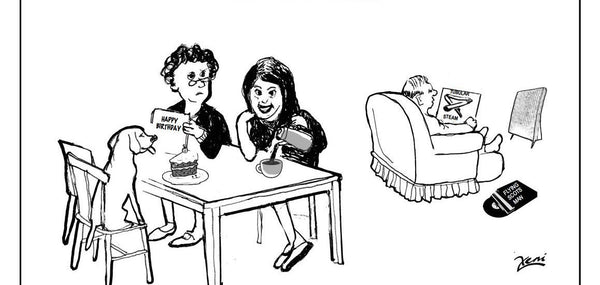
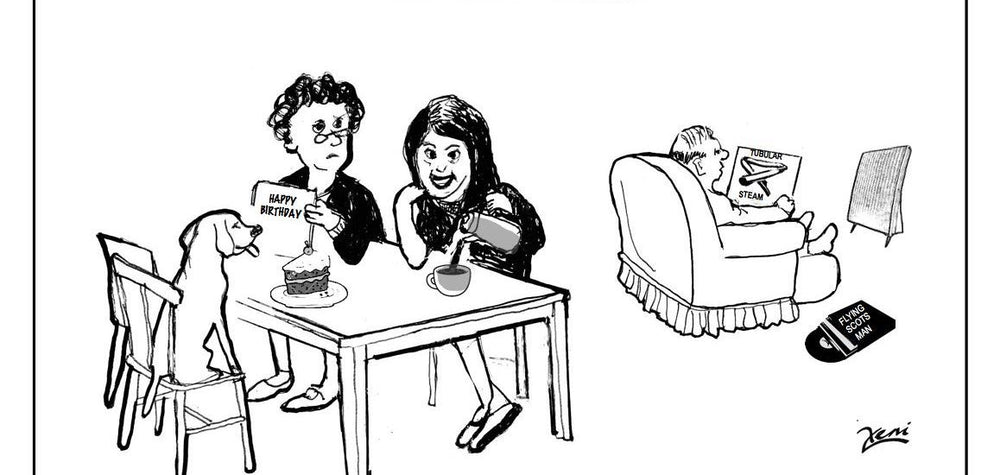


Boogie Wonderland
A great man once wrote:
“Once upon a time in New York City, when the city finally went to sleep, a magical place opened its doors and invited people in to have the time of their lives. Studio 54 was a magical place that made you forget all about your troubles, trials, and tribulations. It was heaven on earth.”
That man was Gene Simmons of KISS, who lent his quote to Mark Fleischman’s book, Inside Studio 54: The Real Story of Sex, Drugs, and Rock and Roll from Former Studio 54 Owner.
Steve Rubell and Ian Schrager opened Studio 54 in 1977 and made it a legendary nightclub by the time they were charged with tax evasion and sent to prison. The first generation of the disco threw its last party in 1980. In 1981, the infamous Roy Cohn brokered a deal from the jailhouse phone and Studio 54 was sold to Mark Fleischman, who ran it for the second and last iteration. Fleischman renovated the club and made it easily convertible for live music performances on the floor or the giant moving bridge twenty feet above the crowd. The new 54 not only remained the place to be seen, but one that hosted a wide array of entertainers, designers, artists, socialites, and even prep schoolers, like me, on a few occasions.
The Manhattan club scene was wide and varied in those days. There was a spot for everyone, from hip-hop uptown to tony midtown and the rougher environs of downtown. Just blocks from my house on 57th Street were the Red Parrot for Latin dancing, Ice Palace 57, and the big daddy of them all, Studio 54. You just needed a connection to get into some of the more elite joints.
It was a particular set of kids at my school that acted as the gatekeepers to this nightlife. They knew all the best dance spots as well as crash-worthy debutante balls, house parties, after-hours spots, and when the hip young Maitre d’ was seating the Oak Room at the Plaza Hotel. Fortunately, I signed on with their social network–my calendar was never as full as my last two years of high school (1982 – 1984) after I started visiting the cool girls at their secret hangout.
They could be found, before homeroom, in the upstairs level of a donut shop around the corner from St. Hilda’s, with their Marlboro Lights, coffee cups, and half-eaten muffins. In a high school with just over a hundred students, the group was a fluid organism, including different classes and ages. Their membership was refreshed over the course of any summer when young women suddenly left behind plaids and Peter Pan collars and returned in gray flannel skirts and crisp white shirts draped as short and snug as the Sisters of the Community of the Holy Spirit allowed. The torso was to be concealed for chapel services with sweaters or jackets. Boys’ uniforms were boring: banker’s gray trousers, white or blue oxford shirt, navy blazer, necktie, and penny loafers. The Reverend Mother also allowed Levi’s corduroy jeans. Whether that was a lapse in judgment or an attempt to modernize, it was providential because I looked awesome in those pants. With this simple yet versatile wardrobe, I cobbled together nearly all my daytime, party, and formal looks.
Teen clubbing and barhopping might seem foreign now, but back then, the drinking age was 18, which meant that a 14-year-old could buy alcohol provided that the man behind the counter, bar, or velvet rope didn’t ask for ID. Besides my Social Security card, I had no other identification and didn’t need any, especially when I obtained party passes at the donut shop. Promoters funneled their club tickets into schools through various channels, and the cool girls who allocated them were the first hurdle to disco nirvana before doormen made final decisions.

One example of Baird Jones’ many party passes from the 1980s. Photo by Tom Methans.
There’s been a lot of ink spilled on the restrictive door policy at Studio 54, but it was forced social equality, and, if you were admitted, you could mix with a diverse crowd of gay and straight, young and old, rich and poor, fabulous and basic. Everyone was welcome and safe from the world outside that was overcoming backlashes against disco. By the end of the 1970s, some rock fans started rioting and burning dance records at public events as part of the “Disco Sucks” phenomenon, something I never understood. In the Saturday Night Fever era of New York, disco was just part of the city’s ambient noise along with subway trains and sirens. It demanded no musical loyalty and offered nothing but freedom, fun, and dancing. I could see why people wanted to go to places like Studio 54.
The first time I was allowed entry, I felt like I had crossed a threshold into an alternate universe. Once past the door and down the glitzy chandeliered hallway, I was swept into an ocean of light, sound, and bodies. It was so much more exciting than sitting in some lousy theatre watching The Rocky Horror Picture Show for the twentieth time, or eating Chinese food at a friend’s house and stealing incremental portions of liquor from their parents’ cabinet. The people at 54 were stylish, worldly, and beautiful, and I guess I was one of them. I couldn’t wait to rub elbows with the crème de la crème of society and find my seat next to Halston, Liza, and Warhol.
However, I spent most of my time wading through crowds to the restrooms and waiting forever to be served by the shirtless bartenders – my tipple back then was Sambuca (with three coffee beans, please!). It would have been faster to accept free drinks from the older clientele perched by the bar, but I always had the money I earned from my after-school job. And I knew exactly what was going on: my uniform by day was often misconstrued as a “hot Episcopal schoolboy” outfit as I walked home from work at night. Eventually, I had to change my route to avoid the rich businessman hotels along Central Park South. With a double snifter of Sambuca and six coffee beans, I walked around 54 studying the light system, locating the speakers from the bridge, and peering into the DJ booth to see which decks they were spinning. “Oh, look at that,” I would think to myself, “Thorens TD-125s and not Technics SL-1200s? Hmm, that’s really interesting.” I might also muse aloud, “I wonder if they’re JBLs or the giant theater Altecs? Maybe Cerwin Vegas like I have?” Precisely the subjects no woman cares about–fresh from the beauty salon in her best dress waiting to hit the dance floor with a capable partner. She certainly wouldn’t appreciate that the sound system was custom-built by Richard Long and Alex Rosner, and the lighting designed by Jules Fisher and Paul Marantz [n.b., no relation to the audio companies].
I really wanted to fulfill my 1970s fantasies of making out with models in the balconies, snorting cocaine on the couches, dropping Quaaludes in the toilet, and huffing poppers on the dance floor, but the opportunities never seemed to present themselves – and I didn’t know how to make any of it happen among those sophisticated partiers. I was also disappointed to never see anyone famous: no Brooke Shields, Bianca and Mick Jagger, or Calvin Klein. It leads me to think they might have packed the club with people like me when there weren’t too many A-listers scheduled.
It wasn’t Mark Fleischman’s fault that I wasn’t having the best time of my life. Everything was there for me: loud music, pretty women, liquor, and dancing. Sadly, I couldn’t dance then. I can’t dance now. I can’t foxtrot, Charleston, or waltz, nor do the frog, jerk, or Watusi. I can’t hustle, salsa, or tarantella. I’m too shy to freestyle in any public setting and I easily embarrass myself at home if a groove should sweep me away.
In my youth, I was scarred by a woman nearly thrice my age who tried to teach me a folk dance at a wedding in Slovenia. She looked like Sophia Loren, and she was clearly the beauty of the village. It got awkward fast as she used her firm hands to guide my waist – gentle at first, then increasingly commanding – while my mother and the rest of her witches’ coven urged her on. After catching my breath, I pointed out the stunner in a tight turquoise dress to my grandmother and asked who she was. “Annika?! That’s your aunt from Stuttgart!” she replied in a language I barely understood. I should have run as soon as the seemingly innocent hello-hug turned into a Freudian dance nightmare.
Stuff like that happened all the time. These women didn’t realize that a boy sitting alone, slack-jawed, and staring into space at some family function could just be an amateur musicologist trying to analyze a piece of music. He’s neither lonely nor wanting to boogie. But I always got roped into boob-level dance embraces with the neighbor lady, a friend’s mom, or someone’s older cousin. My mother never explained the difference between dancing and going steady, so I’ve had to take all these awkward memories and sublimate them into aggressive head-bobbing and throwing devil’s horns in the air whenever I like a song, no matter the genre. It looks more tragic with each passing year, I assure you.
I bet I was one of the few guests at 54 who actually scrutinized the playlist, and I wanted to hear the great old 70s tracks amid the latest drum-machine driven cuts and recent rock-to-disco crossovers which seemed to anger many devoted hard rock fans. Just ask a veteran of the KISS Army how they felt about “I Was Made for Lovin’ You” (1979), one of their biggest hits. I wasn’t bothered; I generally liked the pseudo-disco songs by my favorite bands. The Rolling Stones’ “Miss You” (1978) and “Emotional Rescue” (1980), and Queen’s “Another One Bites the Dust” (1980) were all fine, but nothing like the gold standard of campy rock departures, “Do Ya Think I’m Sexy?” (1978) and its associated sexy video. Written by Carmine Appice, Duane Hitchings and Rod Stewart and meticulously produced by Tom Dowd, it incorporated disco-fashion instrumentation and an excellent bass line by Phil Chen to build a solid dance tune. Were these decent pop songs? Absolutely! Were they bona fide disco tracks? Absolutely not!
Rock bands can’t help but superimpose their natural performance sensibility over another genre, but the best disco is not driven by complex lyrics, guitar solos, or extraordinary vocals. All it needs are good hooks, beats, and loops to create a trance-inducing escapist medium built on a foundation of synthesizers as well as traditional rock and orchestral instruments. Though the rock crossovers struck certain style marks, they lacked the groove, joy, and authenticity of the music that grew out of R&B, Motown, funk, and Philadelphia soul. There are dozens of great hits by major acts like the Village People, Donna Summer, and certainly the Bee Gees’ juggernaut, but there are a few exemplars from the 1970s that truly represent classic disco:
Starting way back in the early days, Barry White conducted the Love Unlimited Orchestra to weave his satin-smooth “Love’s Theme” (1973). The instrumental piece is accented by chicken-scratch and wah wah pedal guitar by brilliant session man Melvin Ragin (aka Wah Wah Watson). Even if the title isn’t familiar at first, you’ve probably heard it many times over the last 50 years.
The next classic is “More, More, More” (1976) by The Andrea True Connection. Andrea True sings in a breathy, warm, sultry-night voice against a background of piano, acoustic guitar, and horns. Whether you vacationed on Fire Island or the Jersey Shore, this dreamy song is reminiscent of a first summer crush. Not only is it sensuous, but the cowbell is outstanding.
Finally, “Don’t Leave Me This Way” (1976) by Thelma Houston and “I Will Survive” (1978) by Gloria Gaynor – two of the best closing-time anthems which also address relationship issues: Houston begs her good lover to stay while Gaynor tells her bad one to go away. One would sing along with the tune that best described their own romantic journey.
My clubbing experience at Studio 54 spanned two visits. After being turned away the third time, I decided my streak was over – twice admitted is pretty impressive considering most people never got in. As a celebutante, I wasn’t pleased about standing in line and waiting to be chosen. I still liked to see shows at Madison Square Garden whenever I could, even with all the inherent violence. Nothing initiates you into manhood faster than having fireworks thrown at your head or dealing with the repercussions of accidentally spilling beer on some metal fan’s spandex unitard. Typically, I hung out at a college bar once frequented by the Beat Generation. Located just one block down Broadway from the donut shop, the West End was old, broken-in, and the very opposite of glamorous, but it was where I could always be with my friends from school – even the cool girls and the lay faculty stopped by. We could stay at the bar all night, popping out occasionally for a bite at the diner or a classmate’s house nearby, before heading back into the smoke for more canned music and drinks, no passes required. Don’t bother going up to 114th Street now. The spirits of the Beats were evicted in 2006.
Studio 54 closed in 1986, but disco never went away – it was just absorbed into newer forms of dance music: hip-hop, EDM (electronic dance music), house, and techno. Then, the next generation of club kids came along and sloughed off the oldsters from Studio 54 to reinvent New York City nightlife in their image at clubs like The Limelight, Danceteria, and Pyramid Club.
When the world is back to normal, I hope discos, clubs, and bars come roaring back. Not for me; I go to bed at 9 pm, so my club days are long over. I mourn for today’s youth who spend too much time at home with smartphones as companions. It’s true that minors are safer in their rooms and not running around city streets like we did, but there is also a lack of spontaneous adventure that can’t be scheduled in among soccer practice, Mandarin lessons, and Rock School. In the early 1980s, our future was blighted by a possible nuclear conflict, a war on drugs, and a looming pandemic called AIDS, so making the most of every moment was more important to me than homework and studying for the SATs. At least, I could leave the house.
Now, kids face a similar situation but with the added stress of isolation and quarantines. I don’t care what kind of dreadful new hybrid of EDM they’re dancing to, or exclusive clubs they’re hiding in, as long as they can escape once again to magical places for some unsupervised bliss. While we all deserve a little heaven on earth, young people should have it guaranteed. Wherever they’re partying in the future, I just hope the DJ plays some slow make-out music. May I suggest “More, More, More” by the Andrea True Connection?
Header image courtesy of Pixabay/Julian Tuca Siminiciuc.


Rediscovering Johannes Ockeghem
Beethoven has enjoyed all kinds of attention in 2020 to celebrate his 250th birthday, but Johannes Ockeghem deserves a birthday party too. He’s turning 600. Never heard of him? Some recent recordings show how this Flemish composer helped create a musical bridge from the Middle Ages into the Renaissance and became one of the most influential musicians of his day.
Full disclosure: The year 1420 is only musicologists’ best guess for Ockeghem’s birth, but close enough. We need more to celebrate in 2020 anyway. Despite holes in his biography, there are some things we know for sure about him. He made a living as a choir singer in Antwerp as a young man before moving to Paris, where he worked for some major cathedrals as well as the royal court.
As a composer, he was famous for his bass voice, which inspired the unprecedented vigor and depth he gave to bass parts in his own compositions. He was trained in the rich-sounding “English style” and applied it to polyphony in both secular and sacred works. He was also at the cutting edge of a trend to combine those two types of compositions, writing so-called cyclic Masses that used pre-existing musical material – a secular song, a Gregorian chant, a motet – as the shared basis for thematically connected Mass movements. He was a close colleague of Guillaume Dufay (whom I wrote about previously in Copper Issue 100 and a major influence on Josquin DesPrez (Watch this space!).
At least one early-music ensemble is determined that Ockeghem get the birthday attention he deserves. Boston-based Blue Heron, under the direction of Scott Metcalfe, put together and toured 13 different Ockeghem programs in their huge Ockeghem@600 Project. Undeterred by COVID-19, they’ve just announced a Zoom lecture series for next spring as part of the festivities (https://www.blueheron.org/concerts/ockeghem-academy/).
Blue Heron’s latest Ockeghem recording is Johannes Ockeghem: Complete Songs, Vol. 1, released on their own label. By “songs,” they mean secular polyphonic vocal works, usually for three or four voices, with French texts.
“S’elle m’amera/Petite camusecte” (“If She Will Love Me/Little Snub-Nose”) is a beautiful example of a secular motet. By the time you get to Bach, the term motet was used only for sacred music, but it started out in the late Middle Ages as quite a different genre. By definition, it had to have at least two texts being sung at the same time, which could be secular (even quite raunchy), sacred, or both simultaneously! This motet is made up of two French love songs, with two voices singing each. Blue Heron, accompanied by bowed and plucked instruments, performs with a fluidity of phrasing sometimes missing from pre-Baroque recordings.
None of these tracks are available on YouTube, but you can hear the entire album and view the lyrics with translation here:
https://blueheron.bandcamp.com/album/johannes-ockeghem-complete-songs-vol-1
Another new recording of Ockeghem’s secular songs can be found on the Musique en Wallonie label. Johannes Ockeghem: Les Chansons is by Cut Circle, an award-winning American ensemble led by Jesse Rodin. The two-disc set contains two dozen songs.
The confident singing is notable for its use of something close to Pythagorean temperament. In brief, this means that the intonation focuses on making perfect intervals (fourth, fifth, octave) exact, which results in thirds and sixths that are slightly larger or smaller than the modern ear is used to. This is, by all accounts, accurate for music of the 16th century and earlier. If you want a little more detail on this topic, you can see a piece I wrote in The New York Times a while back: https://www.nytimes.com/1999/03/14/arts/music-ok-everyone-in-tune-whatever-that-means.html And if you want a lot more information, I recommend the book Temperament by Stuart Isacoff.
Listen to their performance of the three-voice song “Aultre Venus” (“Another Venus”) for a particularly clear example of the perfect-centered intonation. I am not one who assumes that authenticity is the end-all and be-all of early music performance, but this is quite an effective recording.
Ockeghem got extra mileage from his polyphonic secular songs by re-using them as the basis for cyclic Masses. This technique explains why Masses of his and the following generation often have apparently random French words in their titles. (Ockeghem’s Missa Fors seulement, for example, uses material from his song “Fors seulement.”)
Sometimes the cyclic technique is less obvious, as in the Mass commonly known as Missa Mi-Mi. It’s called that because of the melodic motif, appearing in every movement, of E down to A, both using the proto-solfeggio syllables “mi.” But some scholars find evidence that Ockeghem also borrowed material from his song “Presque transi,” so subtly that it takes detective work to find the quotations.
Its sources aside, Missa Mi-Mi is a stunning work, and we’ve been treated to a fine new recording by a group, little known in America, called Beauty Farm. This vocal ensemble, founded in 2014 and recording on the Frabernardo label, is based in Austria. It is made up of six men, all experienced early-music singers, many of whom also work with other groups. Beauty Farm is focused exclusively on the lush polyphonic Franco-Flemish repertoire of Ockeghem’s era.
Beauty Farm’s new Ockeghem Masses, Vol. 2 includes the Missa Mi-Mi plus three other Masses, making it an important contribution to the recordings of this corpus. Vol. 1 came out in 2017. The ensemble has a dense, even sonority, with equally strong singers from bass to countertenor who blend together beautifully. The recording, made in a monastery, rings with the ancient holiness of the surroundings, reverberating at the end of every line. Here is the Gloria from this album:
Any fan of Mozart will know the potential power of a Requiem Mass, but the genre was far from new in Mozart’s time. One that survives by Ockeghem is his Missa pro defunctis (Mass for the Dead). Three of its movements are included on a new recording by Ars Veritas on Centaur Records.
Conductor Jeremy D. Jones also produced this recording made at the Varnhem Cloister Church in Sweden. The album, Old and New Worlds, offers an interesting mix, including several world-premiere compositions by co-director Jakob Patriksson as companion works to the Ockeghem and earlier pieces. The Ars Veritas voices have a less precise, breathier sound than the other groups mentioned above, and sometimes the intonation is questionable. Still, one can imagine that this is closer to what it would have sounded like for cathedral choirs in Ockeghem’s time to sing this music, long before it was possible to get a master’s degree in early-music performance.
Here’s to 600 more years of this beautiful music!
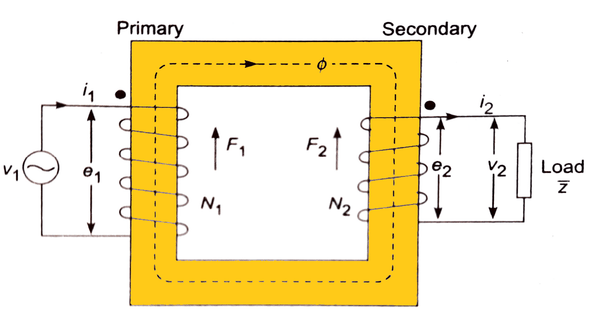
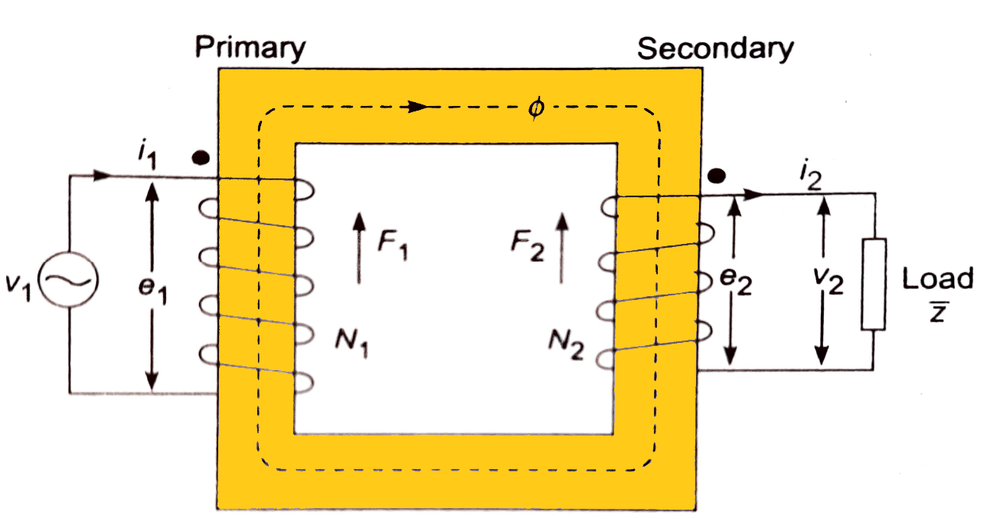
The Coil and Its Significance for Recorded Sound
A few days ago I was in the lab (which in itself is hardly surprising, considering that a significant part of my life is spent there) winding some tiny coils for some experimental transducers, when it suddenly dawned on me that what seems like a remarkably simple idea (winding some wire into a coil) is actually the very basis of recorded and reproduced sound throughout the entire electric era, from the 1930s to the present day.

Winding a coil in the lab. Photo courtesy of Agnew Analog Reference Instruments.
Most of you are probably well aware that audio transducers (devices that convert from one form of energy to another) such as loudspeakers and microphones are often using coils. These are in effect miniature motors, moving the diaphragm (cone or other) in headphones and loudspeakers, or generators, generating an electrical signal in microphones.
In addition, moving coil, moving magnet and moving iron phono cartridges also contain coils and function as generators. Not only that, but to create the records that phono cartridges reproduce, cutter heads containing coils are employed, acting as motors that move the cutting stylus. Turntable and disk recording lathe motors are also based on coils of wire.

A Neumann cutter head and an empty custom machined coil former, shortly before winding the wire on it. Photo courtesy of Agnew Analog Reference Instruments.
With the exception of a few very experimental devices, tape recording and playback heads employ coils, not to mention the multiple motors and solenoids to be found on tape machines.
Then we have the less obvious uses of coils in electronics. The most basic form of resistor is the wirewound resistor, wound as a coil of resistor wire, either nichrome or one of the more exotic alloys such Manganin and Constantan.
Many types of capacitors are also formed by winding foils of different materials into coils.
Then we have inductors, which are essentially just coils, air-coiled or iron-coiled!
If two or more coils are magnetically coupled together, a transformer is created, usually built around an iron core for audio frequency work. These are often used to step up the small signals produced by moving coil phono cartridges and microphones or in the output stages of vacuum tube amplifiers.
While on the subject of vacuum tubes, their grids are also wound as coils of wire and the heaters of indirectly heated tubes are often helically wound, all within the glass envelope of the tube.
Transformers are also universally used in the power supplies of all audio equipment.

Custom Agnew Analog transformers. Photo courtesy of Agnew Analog Reference Instruments.
Not only that, but electrical power generation also largely depends on coils! Whether we look at diesel, coal, nuclear, gas, hydroelectric, or wind power generation systems, the generator always contains windings. Power distribution heavily relies on coils for the transformers used throughout the power grid. Even the alternator in your car, which generates the power needed to charge the car battery, operate the ignition system (on gasoline engines) and power the radio, cassette player, cartridge machine or car turntable (yes, they once existed!), relies on windings!
The pickups used on electric guitars, basses, many electric pianos and electric organs are elaborately-wound coils. Guitar amplifiers often use tubes, transformers and inductors. Mixing consoles as well. Same with the circuits used in electronic synthesizers and the analog signal processing electronics found in abundance in recording studios.
Radio transmitters and receivers typically contain radio frequency inductors, which are also just coils.
In fact, one can put together an entire sound recording studio and reproducing setup consisting solely of coils of different geometry and wire/foil materials and it wouldn’t even be very unusual. Granted, for certain applications, it has been deemed preferable in recent decades (mainly from an economic standpoint) to move away from the coil form for things like resistors and capacitors, but the wound types are still widely available and still needed for certain applications.

One of the coils on a rebuilt Presto cutter head. Photo courtesy of Agnew Analog Reference Instruments.
For something as simple as winding some wire into a coil, the complexity of some coil winding geometries, wire materials sizes, shapes, coil former types and the diversity of winding equipment in use is just mindblowing.
The applications, in audio alone, for coils of wire, are innumerable. Even the tip of the cutting stylus in a disk mastering system has a miniature coil wound around it to provide stylus heating, which helps achieve a lower noise floor on disk.
Loudspeaker crossover networks? You guessed it, coils there too! Ribbon tweeters? They need transformers, so they tend to have coils as well, not to mention that the ribbon itself can be seen as a single-turn coil!
The applications mentioned herein include but are not limited to the pioneering work of Michael Faraday, Joseph Henry (electromagnetic induction), Ottó Bláthy and Miksa Déri, Károly Zipernowsky, George Westinghouse, Albert Schmid, Oliver Shallenberger, Lucien Gaulard, Sebastian Ferranti, and William Stanley (transformer development), Lee de Forest (triode tube), Otis Boykin (resistor), Edward W. Kellogg and Chester W. Rice (cone loudspeaker), Ernst W. Siemens (moving-coil transducer), André-Marie Ampère (electric solenoid), Thomas Davenport and Emily Davenport (electric motor), Emile Berliner and Thomas Edison (phonograph, gramophone, sound recording and the microphone).

Audio-Technica AT-ART9XI phono cartridge. Photo courtesy of Audio-Technica U.S., Inc.
The list of people who contributed to the vast collection of ideas on what to do with a piece of wire is far too long to even attempt compiling a complete version in the short space of this article.
The coil, in all its forms, is indeed the heart of the electrical era of audio. Given enough wire of the correct sizes and material, all the essential audio components could be built from scratch. Well, OK, we’d still need the mechanical parts such as coil formers, loudspeaker cones and at least a turntable, but you get the idea!
Header image courtesy of Wikimedia Commons/Electrical Classroom.
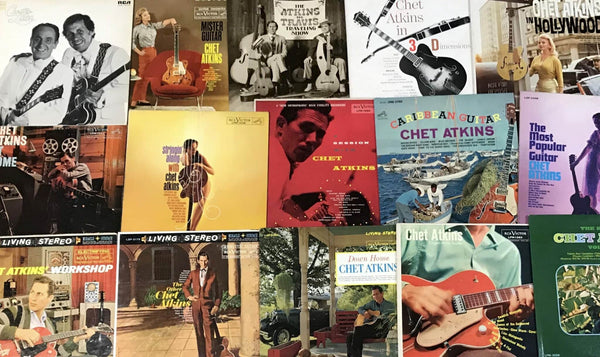
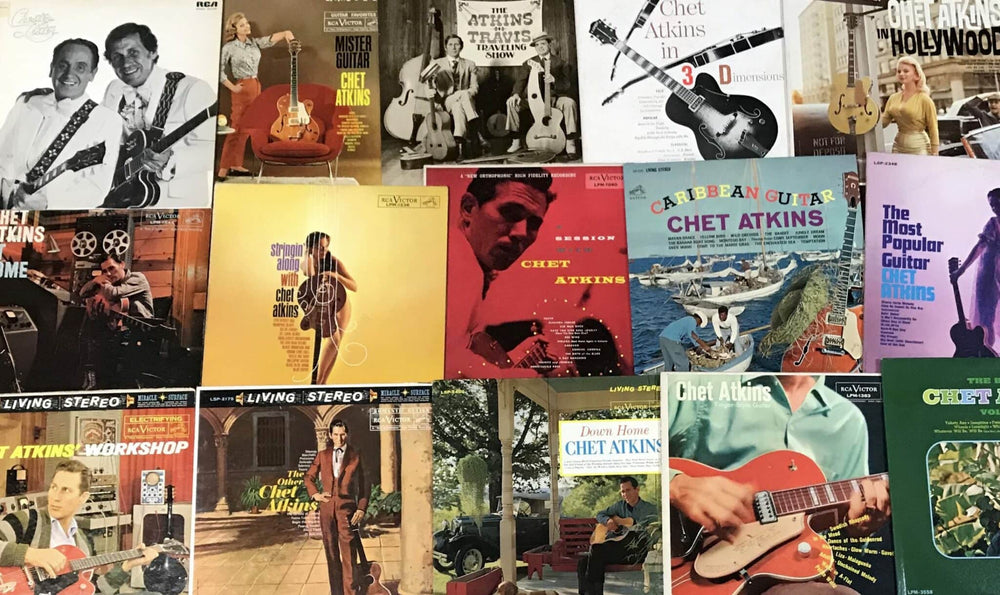
Chet Atkins: The Country Gentleman
He was known as The Country Gentleman, and his guitar playing was a major factor in developing the so-called Nashville Sound. Chet Atkins (1924 – 2001) wrapped his long fingers around bluegrass, jazz, and rockabilly, melding them into a style that came to define country music.
Growing up in a small Tennessee town near Knoxville, Atkins got a beat-up old guitar and learned from family and friends and by listening to Merle Travis on the radio. Travis particularly influenced Atkins’ fingerpicking technique. In 1942 Atkins got a job at WNOX in Knoxville playing back-up instrumentals for guests. After that, he moved around, even to Nashville briefly, joining musical acts and regularly getting fired for not sounding country enough.

He’d made his way to Denver when RCA Victor A&R man Steve Sholes heard him and offered him a contract. That was the break Atkins needed. He ended up recording dozens of albums over his 40-year recording career, and producing dozens more, by major artists like Dolly Parton, Elvis Presley, Waylon Jennings, and the Everly Brothers.
His first few RCA records didn’t catch fire, but his value was never questioned; Sholes loved his studio work, trusting him to hire musicians and lead sessions. He joined the Carter Family Singers, which was his ticket into the Grand Ole Opry. That’s when his solo music started to get a serious following.
One of his first big hits was Chet Atkins in Three Dimensions (1955). Ironically, Atkins described this album as his first foray away from country music. The three dimensions in the title refer to folk, pop, and classical, which he blends into an appealing hybrid style. Country, however, is never far away.
Atkins uses the simple traditional tune of “Arkansas Traveler” as a starting-point for imaginative variations that wander up and down the fretboard of one of the hollow-bodied electric guitars he designed for the Gretsch company.
Among the remarkable things about Chet Atkins in Three Dimensions is the fact that this album is truly solo: just Atkins on his guitar. Of course, his arrangements were so complex and polyphonic that it seemed like more people were playing. It’s unthinkable today that a pop star could put out a solo instrumental record. As it happens, that approach wasn’t enough to keep Atkins afloat either. Hum and Strum Along with Chet Atkins (1959) is an example of the more standard multitrack studio creation. [Some of these early Chet Atkins RCA “Living Stereo” albums also sound superb, thanks to recording engineer Bill Porter, who also recorded Elvis and Roy Orbison among others. – Ed.]
Specifically, this album was supposed to inspire audience participation. It came with the lyrics and guitar chords (even ukulele tabs) printed in the gatefold cover. The admittedly cheesy choral singing on “In the Good Old Summertime” is a little hard to take, but it’s worth enduring to hear Atkins’ clever, jazzy spin on the tune. Everybody sing along!
Without gospel music, there would be no country music. All the first-generation country players understood that. On Chet Atkins Plays Back Home Hymns (1962), the guitarist reaches back for some of the spiritual songs of his childhood, as well as some more recent material.
“Further Along,” more commonly called “Farther Along,” opens side B. It’s a traditional spiritual that’s been recorded by many country artists, all the way up to Dolly Parton and Emmylou Harris. Nothing fancy here, just a Tennessee boy laying down a part of his past. The harmonica solo is uncredited; it’s historically interesting to note that the producer is a woman, Anita Kerr, a singer and composer who did a lot of studio work in Nashville in the 1960s.
The advantage of Atkins’ myriad influences is that it left him open to anything, as well as always on the lookout for new raw materials to play with. For example, there’s Chet Atkins Picks on the Beatles, released in 1964, the very year that the Beatles first visited America. Seeing as they were huge fans of American music themselves, it’s not surprising the Beatles acted as session musicians on the album. George Harrison wrote the liner notes.
There are the expected hits like “Michelle,” “She Loves You,” and “Can’t Buy Me Love,” but Atkins also included some less well-known songs. “Things We Said Today,” written for the Hard Day’s Night movie but not used, had been released as the B-side to the single “A Hard Day’s Night.” Atkins’ version has a loping, Western quality with a sly edge that brings to mind Ennio Morricone’s film scores.
Speaking of Westerns, Atkins had a love for the popular cowboy songs sung by stars like Marty Robbins. In one of his many collaborative albums, Atkins teamed up with long-time colleagues Homer Haynes and Jethro Burns (well known as the duo Homer and Jethro, whose records Atkins often produced) to form the Nashville String Band. Their first effort on RCA was The Nashville String Band (1969).
Robbins’ mega-hit “El Paso” gets the two-guitar-plus-mandolin treatment, complete with backup strings, that makes it sound even more Tex-Mex than the original:
Another of Atkins’ collaborations, and one that must have been a thrill for him, was The Atkins-Travis Traveling Show (1974), which won a Grammy for best country instrumental album. This was the only album Atkins made with his hero Merle Travis (1917 – 1983).
Travis’ fingerpicking technique is on spectacular display in “Is There Anything Better Than This,” one of two Shel Silverstein songs on the album. Travis and Atkins trade licks and spoken compliments on this charming track.
As a perfect illustration of Atkins’ spectrum of interests, he soon made a very different duet album. Chester & Lester (1976), which also won a Grammy, features the granddaddy of the rock guitar, Les Paul (1915 – 2009). It was recorded mostly live in the studio, with almost no overdubbing, a tribute to the caliber of both men’s musicianship. They’re backed by some great session musicians like Larrie Londin on drums and Bob Moore on bass.
And if the blues roots of rock wrapped in country and bluegrass isn’t complex enough, Atkins and Paul lend their talents to yet another genre when they take on the Duke Ellington jazz masterpiece “Caravan.”
As Atkins aged, he kept searching for exciting new ways to combine musical styles. In the 1970s, when classical guitar enjoyed a surge of commercial popularity, Atkins jumped onto that trend by forming the First Nashville Guitar Quartet with Liona Boyd, John Knowles, and John Pell. Their self-titled album in 1979 combined country, pop, and even Mexican elements with the virtuosity of classical headliner Boyd.
Written in 1937, Larry Morey and Frank Churchill’s “Someday My Prince Will Come” premiered in Walt Disney’s Snow White and the Seven Dwarves. Miles Davis showed that the song had a jazz infrastructure with his celebrated 1961 version. Although Atkins’ quartet starts out dissecting it in a more intellectual way, after the first chorus each guitarist’s personality begins to emerge.
Atkins continued recording into the 1990s. He died in 2001, but his legacy will live on forever in the hands of every guitarist who picks a pattern or bends a blue note or has the courage to think outside genre lines.

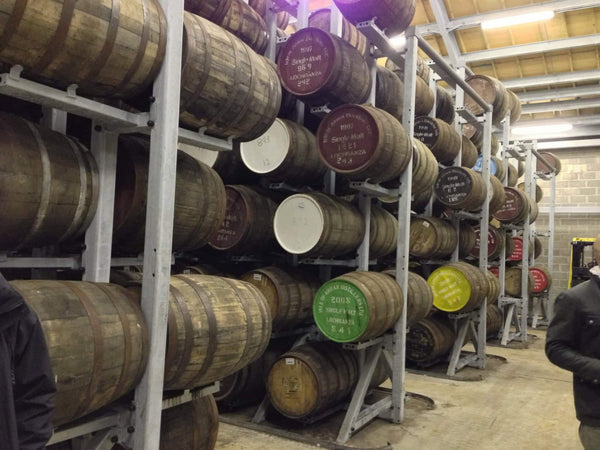

Arran, a Whisky Tale
The ad ran something like this.
“Invest in a new distillery in the Isle of Arran. Your £450 payment will result in 12 cases of blended whisky and a holder of a Founders Bond. You will also receive a personal tour of the distillery.” Now this seemed a good investment, as £450 converted to around $5 a bottle at that time.
Invest in a distillery in Arran? Arran, the fabled island that used to have over 50 legal and illegal distilleries in it? Rumors abounded about the quality of the whisky produced there, but as the last distillery closed in the 1800s, no one really knew for sure. As a whisky lover, I was hooked. I promptly sent in my money.
The Isle of Arran Distillery is situated about half a mile from the Kilbranan Sound, which faces the Mull of Kintyre, whose main town, Cambelltown, is the home of Springbank Distillery (really good whisky). To get to Arran, I took the ferry from Ardrossan, which is an hour west of Glasgow. As you glide (on a calm day) over the Firth of Clyde to Brodick on the east coast of Arran, you are exposed to some of the most spectacular views in Scotland. To the north is the island of Bute and to the south lies Ailsa Craig, an uninhabited island that is famous for its blue granite, used to make curling stones. If you look west to the island, you can clearly see “The Sleeping Warrior” – a mountain range that in relief that looks similar to a resting human body. The drive to the village of Lochranza is short and takes you through some picturesque Scottish villages.
The distillery is most impressive. It is a cluster of white buildings with pagodas on top. They are really ventilators designed to stop spontaneous combustion of the grain by allowing air to pass through it. As grain is no longer stored in large piles, I wonder if the pagodas are just used as a decoration, or of they are essential to the aging process. Nevertheless, they are pretty and add enigma.

Lochranza Distillery. Courtesy of Wikimedia Commons/Paul Birrell/Lochranza Distillery, Isle of Arran.
At the time of my visit the distillery had not yet produced their first bottling so I couldn’t sample my investment. And yet, the tour was very interesting. It was the first time I had ever visited a new distillery and the place positively gleamed. The tour guide made a big fuss about the water on the island. In the lore, the water in Arran is the reason their whiskies tasted so good. I did taste it and found it clear and sweet, but unremarkable for Scottish water.
This was a long-term investment. It took them a couple of years to build the place, and after the distillation started, it still took many more years to produce the spirit.
From time to time I would receive updates on production.
“Spirit aging well in casks.”
“Unique flavor profiles in Arran Malt.”
“First tastings most promising.”

Courtesy of Wikimedia Commons/sebastian.b.
Many years later, my whisky was ready for collection. I could pick up the 12 cases of blended or, as a substitution, five cases of single malt. I chose the latter. Now came the arduous task of bringing it into the US. My first idea was to just ship them but as a frequent flyer, I knew just how sticky US customs can be if you bring in more than one or two bottles.
So what to do? I contacted a friend in Edinburgh who worked for the Scotch Whisky Distillers Association. He suggested I call his friend in Washington who had something to do with alcohol. His friend in Washington turned out to be very knowledgeable, and after the usual pleasantries he told me that without a liquor license it is illegal to bring in that quantity of whisky. Even if I offered to pay the duty, it was still illegal, as I did not have the license, and customs would suspect that I wanted to resell the bottles. After that we talked about our mutual friend in Scotland, about our favorite whiskies and how the laws were really hangovers from prohibition muddled by individual state laws.
When we had finished, I asked him what he did in Washington. “Me? I’m the head of the ATF (Bureau of Alcohol, Tobacco and Firearms). President Bill Clinton appointed me.”
Eventfully an importer of Scotch agreed to bring in the shipment and deliver the five cases to me. By the time it arrived, each bottle cost me over $60. I was eager to try it.
I opened the first bottle and it had a floral smell with an underlying chemical note. Not a good start. I tasted it and swirled it around my mouth. The chemical odor became more pronounced. It was foul tasting.
I opened a second bottle but it was the same. I feared that the whisky was too young and needed more time to develop. Unfortunately, once it is in the bottle, it doesn’t change. I was really disappointed.
I ended up giving them away at a trade show in Las Vegas. Some of my friends told me later that they couldn’t drink it. The distillery now has bottlings of 10, 12 and 18 year-old malts and generally gets good ratings. I on the other hand, have never tasted another dram of their spirit.
******
This story was written a few years ago.
Last year on a trip to Israel via Heathrow Airport in London, I stopped at World of Whiskies, a store with a large selection of malt whiskies. They generously allow customers to taste them. They had an 18 year old Arran single malt and I felt duty-bound to taste it.
It was not good. it had an almost burnt taste with a fruity odor. The finish was too long (in other words, it took far too long for the taste to disappear).
I doubt I will invest in another distillery.
Header image courtesy of Wikimedia Commons/sebastian.b.


Stairway to Heaven
My friend Ira is a committed audiophile and we seem to make leaps into audio system upgrades based on an almost ping-pong effect of gear that travels between our two listening rooms.
We have the luxury of lots of gear at our disposal and, most importantly, lots of time to evaluate and sit and listen.
Sometimes months can go by as we allow products to settle in, and in which we can critically evaluate a specific product. This kind of real-world use in our respective listening rooms has, at least so far, prevented mistakes which, as most committed audiophiles know, can be very expensive!I have 50 years of gear-buying experience (Ira has about 30) so we’ve gotten to the point where we know, in general, how gear will sound based on the companies that manufacture them.
Our listening rooms couldn’t be more different though.
His is a large and relatively undamped living room and the reverberation does seem to add an energy that does not exist in my room.
My room is smaller, with close boundary walls and a huge rug. I also had QuietRock sound-reducing sheetrock added when the room was being rebuilt during my recent apartment renovation.
The effect of such damping makes my listening room sound more like a recording studio environment and less like your average home listening space.

This kind of design allows for much more specificity in the soundfield. I’m used to that and I like it.Both effects – the reverberation damping and the soundfield specificity — have their advantages, assuming that one not only reconciles that this is the way the room and system behavior is going to be, but to also make decisions based on these listening preferences.
I think Ira’s room needs some control.
But regardless of what I think, Ira is pretty happy.
Or is he…
Our systems share certain gear similarities. We use the same company’s preamp and amp, the same SACD player and the same speaker and interconnect cable. Ira’s system is based around CDs but mine also includes vinyl. We don’t use the same power cords and most importantly, we don’t own the same speakers.
What we both do have, however, are very musical systems, not “hi-fi”-sounding systems.
The difference?
If you have ever worked for a high-end audio store like I did, for four years at Lyric HiFi in Manhattan, or ran an audio company (Ira had a speaker company briefly) then you know how to “sell” a product. You learn what sounds best and, more importantly, what can sound “spectacular” in order to make a sale.
However, what can sound “spectacular” may not necessarily be more musical.
A “musical” system, for lack of a better explanation, is a system that just feels right. Like shoes that have broken in to the point where you don’t even know that you are wearing them.
In this world, making gear changes is done very slowly and methodically.
You look at your system and say to yourself…hmm, what one item should I change next to take the system to the next level? Should it be the CD player, turntable, preamp or power amps, speaker cables, acoustic treatment, power conditioning or something else?
You pore over the magazines, you visit an audio store.
Luckily, I can go to Ira’s apartment, he can come to mine, and we can listen, in real-world environments, and make better and more educated decisions.

Months can go by.
That’s fine with both of us.
The point is: you need to really pay attention to get to what may be the next move to reach your stairway to heaven.
Header image courtesy of Pixabay/Peter H.
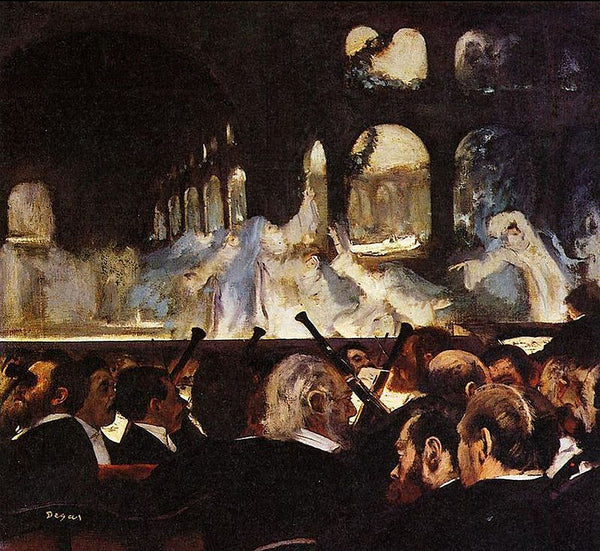
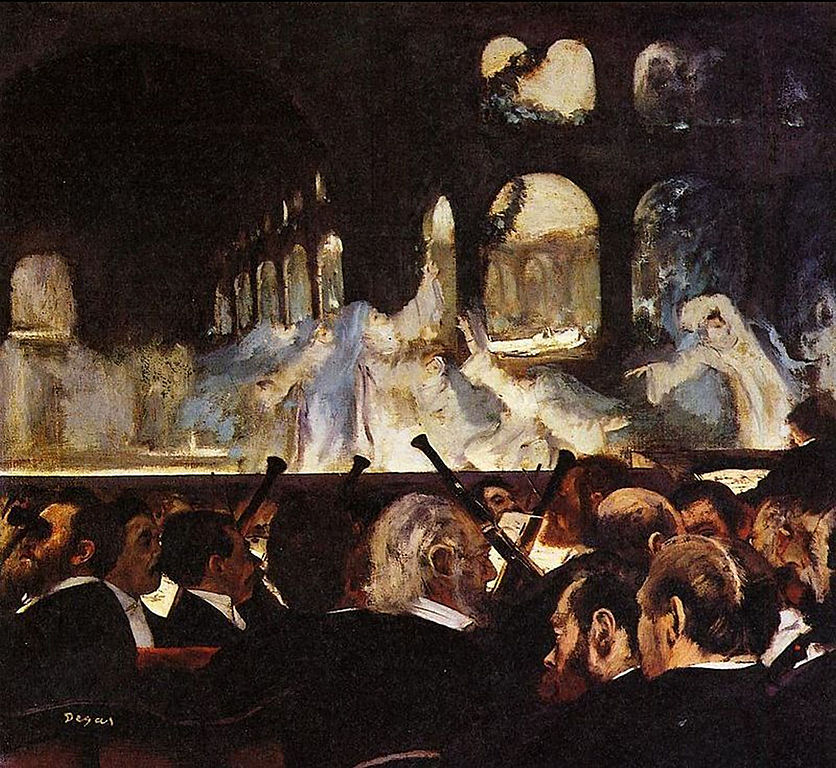
Bel Canto, Part 1
Recently I’ve been watching a lot of Dark, now streaming on Netflix. It’s both an epic tragedy and a sci-fi Bildungsroman like Stranger Things or Back to the Future. I like it! Dark is just clever enough, creepy enough, “deep” enough to hit all my cultural receptors. What’s more, it has reminded me of how opera works.
Some back story: bel canto is Italian for beautiful singing. One undergraduate textbook describes it as
characterized by seemingly effortless technique, an equally beautiful tone throughout a singer’s entire range, agility, flexibility, and control of every type of melody, whether long lyrical lines or florid embellishment.*
For years I harbored little interest in bel canto, but thanks to the wonders of Blu-ray and Met Opera on Demand, I’ve taken baby steps toward better understanding it. Here’s what I stumbled onto last month by sitting through Vincenzo Bellini’s Norma: in the hands of Bellini (1801–1835), Gioachino Rossini (1792–1868), and Gaetano Donizetti (1797–1848), bel canto celebrated and successfully renewed many older operatic traditions. (What a shock, right? Click here to watch the Met’s Norma with Sondra Radvanovsky and Joyce DiDonato. Or get the Blu-ray.)
The librettos of Handel’s operas, for example, largely function to set up a series of, well, situations. In each, a character must respond with an appropriate da capo aria, vividly expressing a single strong emotion. Bottom line, it doesn’t matter whether the plot is credible as long as it provides one situation after another that prompts an intense response from a principal singer.
Bellini’s Norma does that too. So do the operas of Rossini and Donizetti. So do the operas of Verdi and Wagner and Puccini.
Bellini and his peers did score one big advance over Handel: they replaced the da capo aria with a more flexible song structure, the cavatina-cabaletta. Within it, a singer typically opens with a slow-moving reflection (a cavatina), followed by a recitative in which she confronts her predicament and makes a decision. Then she finishes up, singing livelier music (a cabaletta) to seal the deal, end the scene.
“Casta Diva,” from Act I of Norma, follows the formula. In a cavatina, Norma, high priestess of the ancient Druids, calls upon the moon goddess to temper the zeal of her flock, all too eager to revolt against their Roman conquerors. In the recitative that follows, military fanfares ring through the woods as she bids her followers disperse. Norma promises that, once the gods command it, her voice will “thunder from the temple” and no Roman will escape their wrath. The Druids voice hearty assent, vowing that despised Roman proconsul Pollione will be first to go. Norma exclaims, “He shall fall! I shall punish him . . .” but in an aside she quickly admits to herself that “my heart will not let me.” As the cabaletta rushes onward, she fervently voices her secret hope that Pollione, once her lover, will return to her, and that on his breast she “will find life, homeland, and heaven.” (The audience already knows that Pollione has moved on, but Norma does not yet realize just how far.)
To recap: it doesn’t matter whether the plot is credible. Cavatina-cabaletta structure provides a succession of emotions—which do matter—carrying the storyline forward.
Bel canto composers also employed cavatina-cabaletta for duets, creating elegant, dramatically effective dialogues that resolve into upbeat conclusions. One such moment occurs in Act 2 of Norma. At this point, Norma and Adalgisa (Norma’s protégé, romantic rival, and BFF) have confided in one another regarding their experiences with Pollione. Together they struggle to determine a course of action. In “Mira, o Norma,” Adalgisa begins by asking Norma to consider the fate of her children by Pollione; they need their mother. She then brings the matter to a head, renouncing Pollione and swearing “to stay concealed with you forever.” Norma gratefully agrees, and as the cabaletta gets underway, she declares that “the world is large enough to be a shelter to both of us together.”
The cavatina of “Mira, o Norma” is often performed in concert without its cabaletta. In this clip from the Ed Sullivan show, Marilyn Horne and Joan Sutherland do it properly, i.e., with cabaletta. (You can hear the audience attempt to applaud at the end of the cavatina, but Horne and Sutherland use a bit of stage action to nip that in the bud.)
Norma is above all a drama about female friendship, exploring and encompassing loyalty, betrayal, and forgiveness. Its Adalgisa-Norma dialogues and duets are high points, contributing to more complete characterizations and offering the opera’s most satisfying music. On the other hand, Pollione comes off as a cipher whose personality in any performance depends largely on the imaginations of the stage director and singer.
A bel canto opera with stronger male leads is Anna Bolena, one of three Donizetti operas based on stories of England’s Tudor Queens. Anna features a randy but imperious Henry VIII, untroubled by his newfound passion for Jane Seymour and growing coolness toward Anne Boleyn, his queen. Having succumbed to Henry’s advances, Jane nevertheless feels guilty and is disturbed by his dark threats toward Anne. In this opera, Donizetti’s first great international success, numerous episodes reveal his innovative treatment of bel canto style.
This complete YouTube video of a now-classic Wiener Staatsoper production is also available as a Blu-ray disc with superb sound and video quality. Or consider David McVicar’s Met HD production, available here. At the Met, Marco Armiliato’s incisive conducting brings out every flash of drama, and Netrebko again offers her signature portrayal, superbly supported by the Met Chorus. Sadly, neither the Met’s Jane nor its Henry offer the more complex, convincing portraits created by Garanča and D’Arcangelo for Vienna.
A tasting menu: (1) In Anne’s first cavatina “Come, innocente giovane” [19:03] she reacts to a ballad offered by her household musician Smeaton. The song has touched her unexpectedly; she mourns her lost loves and the hollow splendor of the throne. As fanfares sound, she moves to dismiss her courtiers and calls Jane to her side. In a moderately paced, intimately scored cabaletta, she warns her lady-in-waiting of the hazards that await any woman who allows ambition to triumph over personal honor. Jane exclaims to herself, “I haven’t the courage to speak,” and the courtiers, knowing of Henry’s infidelity, echo her. The music accelerates, ending the scene with a burst of theatrical energy. (2) What follows [27:00] is nominally a duet for Jane and Henry. Yet instead of singing together, they conduct their indelicate negotiations by trading insults and accusations. It’s a prime example of Donizetti’s talent for depicting violent confrontations, which erupt regularly in his operas.
(3) An aria finale for Anne occupies the last twenty minutes of the opera [2:43:10], stretching the always-elastic boundaries of Italian solita forma to the limit. It’s basically a lengthy pair of repeated cavatinas with martial interruptions, ending in a hysterical cabaletta, formidably difficult to sing, a fine early example of the many mad scenes that Donizetti and his peers would create for their prima donnas. (Fun fact: the roles of Norma and Anna were written for the same 19th-century soprano, Giuditta Pasta.)
You may have noticed we didn’t touch on Rossini or on bel canto comedy, which are one and the same for many opera buffs. That’s only because I’ve run out of space. We’ll return soon with lots of Rossini, including the single funniest, sexiest bel canto opera ever.
In the meantime, let’s circle back toward Dark. Richard Wagner, who gave us Tristan und Isolde and the Ring cycle, also gave us a word for the DNA of such entertainments.
That word is Gesamtkunstwerk. Kunst = art; Werk = work; gesamt = united or complete. Wagner sought to fully integrate music (both orchestral and vocal), narrative, costumes, lighting, set design, and special effects (i.e., anything else). They had to be conceived and presented altogether, because no single component was nearly as effective by itself.
Early in its run, Dark was criticized for propagating “overcomplicated” plot lines. One critic wrote, “It asks us to follow its threads as far as we can bear, but in the end its problems may not be worth solving.” I think this rather misses the point. Dark is not about problem-solving. Indeed, it offers a wide array of patently insoluble problems.
Dark’s time-traveling characters are caught repeatedly in impossible vises, some of their own making, some not; some quotidian, some cosmic. Much as in Norma or Anna Bolena, these threads present an endless succession of wrenching conflicts and choices. We empathize with Jonas, Ulrich, Katharina, Hannah, or Claudia as we might with Jane or Anne or Adalgisa. In Dark, the casting, cinematography, sound design, cuts/dissolves, and fragmented storylines combine to create an engrossing total experience. And, as in Bellini, Donizetti, and Rossini, plenty of erotic friction pushes these stories on their way.
So does bel canto also exemplify Gesamtkunstwerk? No, it does not — we don’t live in an either/or universe. If you like beautiful singing, you’ll like bel canto opera regardless. Stay tuned.
* Burkholder et al., A History of Western Music, 8th ed., Norton 2010; edited for clarity.
Header image: Detail, The Ballet from “Robert le Diable” by Edgar Degas, 1871.


Hearing Loss and Audio: Not a Conflict; a Path to a Better Experience
This article was prompted by a comment Robert made to last issue’s article, “Hearing Loss and the Need for High-End Audio.” I asked Robert to expand on his comment here. – Ed.
Hearing loss is a part of life for so many. It is not a curse, but a condition that affects people on a spectrum from quite mild to severe. Depending on its severity, it can significantly affect someone’s life or merely be a nuisance. For some it simply requires turning up the volume a bit more on their TV, phone or while listening to music, while for others it steals certain frequencies and may make intelligible listening difficult. Hearing loss, like so many other disabilities, is an important topic to speak about, especially now that many more affordable and better-performing hearing augmentation solutions are coming to the market.
I have been working on this topic as a part of my audio career for some time. The truth about hearing issues is that they are widespread, and should not be a subject of shame or hidden, as they are often a quality of life problem. Much hearing loss can be natural; as we know some high-frequency loss is often associated with aging. Hearing loss can also be noise-induced (NIHL, or Noise-Induced Hearing Loss) from being exposed to loud sounds at work or at rock concerts, to name just two examples, and can take different forms, such as tinnitus (a high-pitched ringing, whistling or other sound in the ear) or simple volume loss, often caused by the death of fine hairs in the ear.
Historically, one major problem with hearing issues has been their cost. The highest-quality units can cost upwards of $6,000. For many, such an expense is simply not an option. And while the best devices are small and discreet, they have relatively short battery life (although rechargeable hearing aids are now available) and they’re easy to lose, (and buying two pairs of hearing aids in case one pair gets lost isn’t an option for most). Long-suffering family members may simply have to yell or repeat themselves.
As a result, over 80 percent of those with hearing loss simply do nothing about it. This is a shame, since a new breed of assistive listening devices is becoming available, thanks to advancements in technology as well as the passing of the Over-the-Counter Hearing Aid Act of 2017, which has paved the way for the availability of lower-cost hearing aids.
Up until 1996, when Widex and Oticon introduced commercially successful digital models, hearing aids were analog devices (with the exception of a few digital models that never reached mass acceptance). Someone in need of hearing aids would go to an audiologist for a hearing test, which produced a listening curve known as an audiogram. Then, hearing aids would be custom made for the person, constructed by using resistors and capacitors in order to correct for the person’s specific frequency losses, apply needed volume boosts and so on. Hard to believe today, but that’s how it was done.
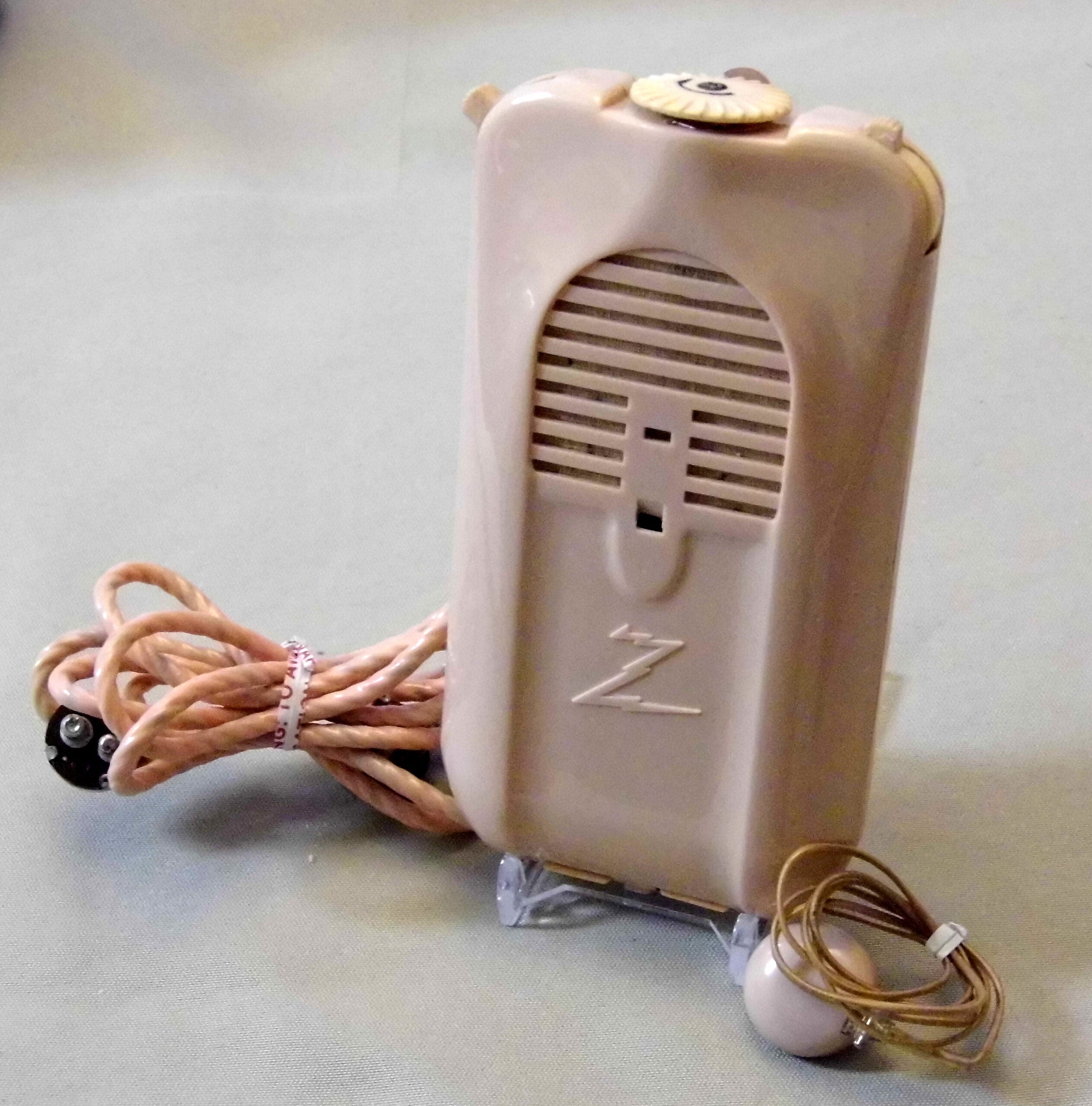
A Zenith hearing aid circa 1944. It used vacuum tubes! Courtesy of Wikimedia Commons/Joe Haupt.
As you can imagine, the better devices were very complex and handmade and the result was expensive. Surely this was better than an old horn stuck in the ear, but the cost left most people out.
Over the last 35 years, a better path has evolved, the results of advancements in digital signal processing (DSP) and component miniaturization. Digital signal processors in hearing aids handle much of the required frequency response and volume level corrections, in addition to providing other enhancements such as noise-cancellation and control of the directionality of hearing aid microphones. In addition, as noted, the nature of the marketplace is beginning to change thanks to the Over-the-Counter Hearing Aid Act of 2017, and rules, regulations and laws being changed to allow over-the-counter sale of hearing devices that do not need to be issued by a doctor or an audiologist. We see this in the $499 devices now offered by Walmart or Costco. These are not the top solutions but they work and help.
Advancements in audio DSP technology are of course being driven by today’s consumer electronics world of smartphones, laptops, streaming audio and the vast universe of devices that rely on DSP, to say nothing of the immense success of small true wireless in-ear headphones such as Apple AirPods.

Block diagram of a digital hearing aid. Courtesy of Wikimedia Commons/IT4YOU CORP.
It is projected that 320 million units of true wireless headphones will be sold in 2021. This makes the parts used in their manufacturing to be widely available and cost effective. Hearing aids are also common, but if the parts for both product types can be used interchangeably, the current 30 billion dollar hearing aids business could quadruple as many more people will be able to get help.
In-ear wireless headphones are sold in tremendous volumes and are driven by SOC (system-on-chip) wireless solutions from firms such as Qualcomm, Airoha (MediaTek) and Realtek. The SOC chips include DSP functions. On the other hand, most current hearing aids use proprietary systems that are customized to the size and power constraints of hearing aids, which is one of the reasons for their high cost. However, since the form factor for hearing aids is much the same as for wireless earbuds, they can share many of the technologies used in earbuds. As a result, the overall cost of hearing aids is dropping, while the capabilities of the devices are growing and their power consumption is shrinking.
As the production of the components used in hearing aids moves to much bigger providers, it has enabled other types of “companion chips” with specific processing functions like additional memory and DSP, or even machine learning or AI functionality to enable more capabilities. That is what Nuheara and Pyour are doing with some of their hearing aids. Also, firms like Stringer make DSP products specifically for hearing aids. Over time, some of these functions could be absorbed into SOC chips. These advancements have resulted in better performance in measuring a person’s hearing and in smoothing out the response curves of hearing aids, even giving users the ability to adjust their hearing aids on the fly.

Nuheara IQbuds² MAX “smart” hearing buds.
Earlier digital hearing aids had sampling rates around 20 kHz – far lower than CD-quality – but modern devices now generally sample at or above CD-quality level, thanks to shared chipsets and the price of technology coming down.
More advanced hearing aids from new firms such as Eargo can interface with phones, TV and other devices in highly interactive ways and also work as many conventional headphones do for music and other listening, as well as serving strictly as hearing aids. I just reviewed a pair of hearing aids from a firm called Pyour Audio (pronounced “pure”; these folks are from The Netherlands) that feature quite high-quality drivers to produce good audio and utilize Apt-X HD and other higher-end codecs. Their hearing aids are really modified high-end true wireless earbuds, combined with a companion chip to run Pyour’s algorithms and make the devices function as hearing aids.
In fact, Pyour hearing aids have a 48 kHz sampling rate. As chipset solutions continue to come down in cost this means we may even see the advent of “audiophile” hearing aids.
In addition, we’re starting to see audio products other than hearing aids that address the needs of people with hearing loss. Not surprisingly, a major product category is TV speakers and soundbars. (Among other topics, ZVOX’s Tom Hannaher addressed this in our interview in Issue 123.)
I feel that ultimately, there will be no reason for those with some form of hearing loss to not be able to enjoy music as much as the next person. (This isn’t even taking into consideration the fact that many people with deep hearing loss, or even totally deaf, still enjoy the rhythm of music and dancing.) Better and more affordable solutions are on deck. If readers are interested, we can cover specific products in detail in future articles. This is all good news.
Header image courtesy of Pixabay/Robin Higgins.
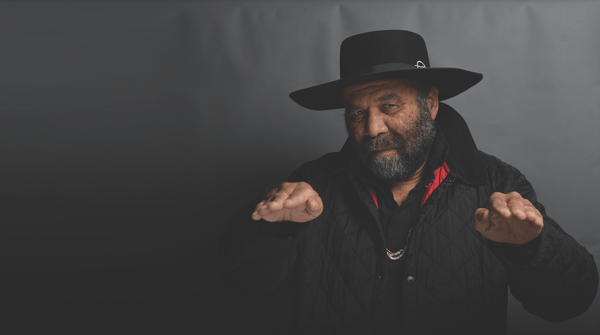
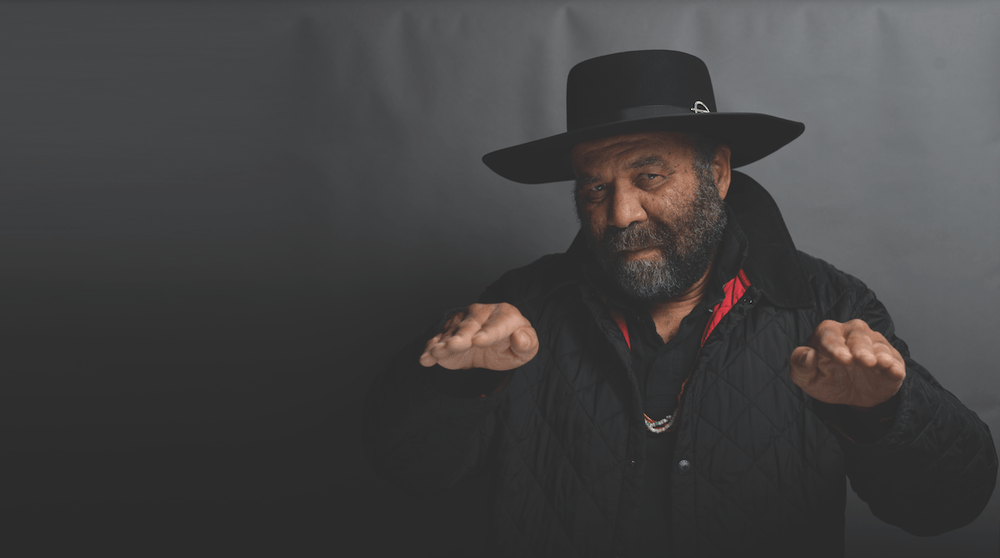
Otis Taylor’s Hey Joe Opus | Red Meat
Octave Records released its third album on November 16, an exclusive Direct-To-Master high-resolution audio reissue of Hey Joe Opus | Red Meat by blues/rock artist Otis Taylor. Winner of multiple Downbeat and other awards and a member of the Colorado Music Hall of Fame, singer/songwriter/multi-instrumentalist Otis Taylor is the founder of the annual Trance Blues Festival. He has spent a lifetime creating and perfecting his signature trance blues style, rooted in blues and blues/rock yet reaching beyond convention with Taylor’s deep improvisations and category-defying playing.
In addition to electric and acoustic guitar, Taylor plays banjo, mandolin and harmonica. On Hey Joe Opus | Red Meat he’s joined by world-class musicians including band members Todd Edmunds (bass), Taylor Scott (guitar), Larry Thompson (drums) and Anne Harris (violin). Other musicians on the album include Warren Haynes on guitar, plus Langhorne Slim (backing vocals), David Matthew Moore (banjo), Ron Miles (cornet), Gus Skinas and Steve Vidaic (keyboards), and The String Cheese Incident’s Bill Nershi on guitar.
The hybrid SACD features a unique format. Tracks 1 – 10 are in pure high-resolution Direct Stream Digital (DSD), and tracks 11 – 20 are from a vinyl needle drop to DSD from a 45 RPM DMM (Direct Metal Master) release from record company and cable manufacturer in-akustik.
Hey Joe Opus | Red Meat is available in a limited-edition release of 1,500 gold-pressed hybrid SACD discs with the master SACD layer and a CD layer. In addition, the album is available as a download bundle including DSD64, DSDDirect Mastered 192kHz/24-bit, 96kHz/24-bit and 44.1kHz/24-bit PCM.

Hey Joe Opus | Red Meat features eight Otis Taylor originals and two versions of the classic “Hey Joe,” presented in two parts. How does an artist breathe new life into “Hey Joe,” a song that’s been covered by everyone from Jimi Hendrix to Patti Smith? Taylor does it with heart, fire and incandescent guitar playing and Ron Miles’ cornet playing providing impassioned counterpoint. Taylor’s originals span a wide range from the rocking funk of “Cold at Midnight” to the echo guitar and cornet-fueled contemplative instrumental, “They Wore Blue,” to the slow-blues shuffle, “The Heart is a Muscle (Used for the Blues)” and the up-tempo acoustic guitar and banjo fingerpicking of “Peggy Lee.”
The album was originally recorded at Boulder, Colorado’s Immersive Sound, engineered and mixed by Mike Yach and mastered by David Glasser at Boulder’s Airshow Mastering. It was remastered from the original Direct Stream Digital (DSD) master mixes by Octave Records’ Gus Skinas in pure high-resolution DSD using the Octave Records’ DSDDirect Mastering process. The sonic result is a recording with exceptional presence, detail, clarity and dynamics.
The reissue production of Hey Joe Opus | Red Meat was done using a Sonoma digital audio workstation (DAW) in pure one-bit DSD and mixed on an analog console. During mastering, the album was monitored on ATC SCM50 and Infinity IRS V loudspeakers driven by PS Audio BHK Mono 300 power amplifiers.
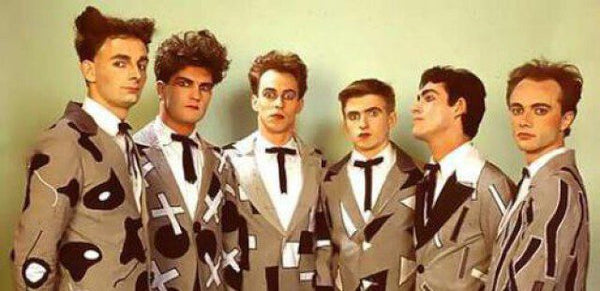
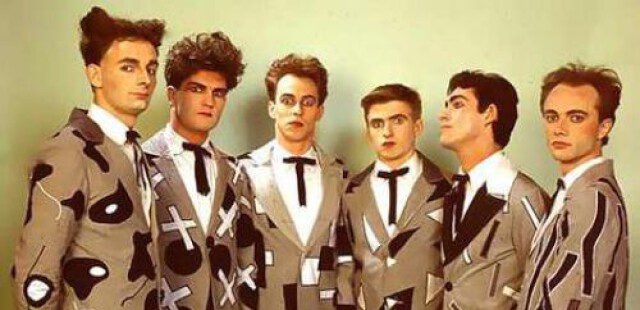
Split Enz: True Colours, Part One
We drove our three rental cars up to the lobby entrance of the Sunset Marquis at 1200 North Alta Loma and started to unload our luggage and stuff. A few guys were standing there with hands on their hips and said, “you cannot unload there; the ‘Boss’ is going to be here any second and we need the area clear. Go to the parking lot and unload there.”
“Really? Surely you jest,” I answer. They moved toward us in a threatening way and one of them said, “Bruce Springsteen is coming and the front area has to be open with no people or cars.” At that moment Roy Bittan (who by the way was the keyboard player with my Peace Parade show; see the articles in Issue 117 and Issue 118) walked out of the hotel’s front door and stopped when he saw me. “Hey Kenny!” he said. I turned and smiled at him, “Roy!” and we hugged. Sizing up what was going on, he turned to his road crew and said, “it’s cool, leave it be guys.”
It is the fall of 1980 when Randy Hoffman from Champion Entertainment (Tommy Mottola’s management company at the time) called to tell me that Split Enz is coming in for a tour for the US and Canada. Led by brothers Tim and Neil Finn, the Split Enz tour is in support of their new album True Colours, which yielded the hit “I Got You.” “Are you available?” “Shoot yeah,” I said. “Great,” he replied. “Come up to the office and we will go over the tour and all the details. It’s quiet here at the office now. Tommy is not around; he is with Hall and Oates on the road.”

Split Enz promo photo. Courtesy of A&M Records.
Later that week at Champion’s office Randy tells me, “there is going to be a heavy dose of press throughout the tour, but the good news is you won’t have to deal with it. There will be someone from A&M Records’ publicity department meeting you guys in all the major markets. A&M will be coordinating all print and radio interviews and for the most part they will work these appointments.
At this time True Colours and the single “I Got You” were monster number one hits in Australia for over two months, holding Pink Floyd’s The Wall to the number two spot. With that kind of success, it made sense for both A&M Records and Champion to pull out all the stops in terms of press support.
The first gig was at none other than the Fast Lane, the club in Asbury Park, New Jersey that helped launch Bruce Springsteen’s career. Things started well; the Finn brothers are easygoing which is a plus because the Fast Lane was unimpressive and run down even then, having seen better days. (It’s now gone.) Then we played up and down the Northeast corridor with dates in Cherry Hill, NJ, Philadelphia, and in Washington DC at The Cellar Door. We were at Irving Plaza in New York on October 4 and at New York’s The Ritz on October 8.

What a tour schedule! Courtesy of Ken Sander.
In New York we were joined by a brand-new large RV with a driver, because with amount of people in the band and crew we really had too many of us even for three rental cars, and too few of us for a bus. The recreational vehicle was big and comfortable and this became our ground transportation on the East Coast in the States and in eastern Canada. After New York CIty we went to My Father’s Place in Roslyn, Long Island and then drove north to Albany to play J.B. Scott’s and from there on to Canada..
The first Canadian gig was in Ottawa and I was still dealing with paperwork from a difficult border crossing. The Canadian customs officials were terribly concerned that we would sell our musical equipment, since musical instruments cost about 40 percent more in Canada than in the US at the time.] The Canadian government had a legitimate concern because their tax system raised costs on everything imported, but they lacked common sense in suspecting that an international touring group would sell the equipment they needed for performing and which could not be easily replaced, especially while in Canada. These officials would spend too much time and energy in enforcing their bureaucratic regulations. Bonds were posted and other hoops had to be jumped through to get everyone and everything into Canada.
In Montreal, the Enz, as they were sometimes called, played a club in McGill University called Le Club, (what an ingenious name). This was a fun night with a lot of back and forth between the audience and the Finns. After the show some of us went out with the school’s concert committee for drinks and a bite to eat. They took us to a large pub, and while hanging out a young French Canadian gal joined us and sat next to me. The attraction was instant for both of us. She spoke little English and I little French. After a couple of brandies each we decided that I needed to learn French and she would be the one to teach me. Brilliant decision. That night I learned French, man did I learn French. It broke my heart to wave goodbye to my French teacher the next morning.
Next night was Toronto and the drive southwest from Montreal was across barren and bleak country. Montreal had a French Canadian Catholic culture and influence, while Toronto had a Protestant Anglo British vibe. Both cities feel familiar because they are on the North American continent and the brands of cars and appliances are the same as we use in the States, but these cities are also distinctively unique. The eastern part of the Canadian tour was over, and we drove back across the border to Ann Arbor, Michigan, easy peasy.
Iggy Pop, who was going to be co-headlining with us on some West Coast dates, was supposed to come to that night’s show at the Second Chance to meet the band, but he did not show up. However, after the show one of his people said he would take the Finns and me to where he was staying. We got to the house and went in. The lights were dim. The three of us stood there in the living room and Iggy staggered in. Man, he was ripped, slurring his words, he could barely talk. The meeting was very short, and his people put Iggy to bed and then drove us back to our hotel. That was not our cup of tea but, no judgements either.
Next night we were in Chicago at the Park West, playing for my old friends, Jerry and Arnie’s JAM productions (see my articles on Nektar’s first tour in Issue 115 and Issue 116). Backstage I ran into Cynthia Plaster Caster of the Plaster Casters. Cynthia practices a unique type of groupie art that was initially made famous by my sister Ellen in an article for The Realist and followed shortly by another story in Rolling Stone. The Plaster Casters specialized in making casts of male rock stars’…The Casters’ notoriety was further enhanced by Frank Zappa, who as a married family man did not want to get casted but supported the concept. The Plaster Casters were common knowledge and well-known on the scene and they had quite a collection. They had been accepted in the rock and roll community.
Cynthia wanted to cast one of the Finns, but I told her these New Zealand boys would not even consider it. Then, she said, “why don’t you do it?” I declined and tried to rationalize that I was not a famous musician. She replied, “you fit in, it will work.” Again I said no, and she said, “I cannot believe that Ellen’s brother is too chicken to be cast.” She must have asked me ten times. One of her selling points was that I would “reside” in Cynthia’s museum alongside casts of Jimi Hendrix, Eric Clapton, Steve Miller, and other famous people. Not for me; that is not the kind of notoriety I want. I told her no again and again. I am not going to even mention how she prepped her subjects.
Some following dates that were originally booked in Kansas City, Austin, Tampa, Atlanta, and Miami were canceled. Now we went west instead of south. We were also finished with the RV, and our driver drove it back east and returned it to New York.
We flew Northwest Airlines into San Francisco. The next gig was at Bill Graham’s Old Waldorf at 444 Battery Street between the financial district and Central Embarcadero Piers Historic District. This neighborhood was on the safer side of San Francisco. Bill was not at the club that night, but he ran a tight ship, from the box office to the backstage catering. The house staff were professional and everything went smoothly. There were a ton of press interviews yet again, and two shows that night, 45 minutes each at 9:00 and 12:15. Bill Graham Presents was a professional organization.
Next, Elmer Valentine’s Whisky a Go Go beckoned to Split Enz. They did two nights, two sets a night at 45 minutes each at 10:15 and 12:15 with A&M Records again holding court to lots of press. Tommy Mottola, and Randy, Jeb, and Al from Champion Entertainment flew out from New York for the show and to spend time with The Enz. This left me with some free time, and I got to see my dear and longtime friends Gayle Galli and Bambi Byrens, the late Barry Byrens’ sister (see Issue 123]. I drove up to her house at 1000 Loma Vista Drive in Beverly Hills and we had lunch by the pool. Most of my other Los Angeles friends were in the music business and they were out of town on the road.
I took one of the rental cars and drove up to my old address in Laurel Canyon to see what changes had taken place over the years since I had lived there. And changes there were – dirt roads were paved and new houses, ones with the potential for views, had been built close together, making use of every inch of land. Because of the rough and steep terrain, many of these houses were built partially on stilts to keep them level and at different angles, giving each house an unobstructed view of the L A basin or the Pacific Ocean and a feeling of separation, even though the houses might only be three feet apart, belly to butt so to speak.
It seemed to me that Laurel Canyon had even then become upscale and no longer a place of hippies and musicians. The relaxed atmosphere of spontaneous hanging out was now replaced with houses with security systems. The life I knew while living on Ridpath Drive seemed to be a thing of the past. Still, it always great to be in LA. The next day was another off day, meaning, no show, but the Finns had some radio and television interviews and other stuff to do and then dinner with the Champion people. Gayle and I went for dinner at Barney’s Beanery and celebrated my birthday.
To be continued…
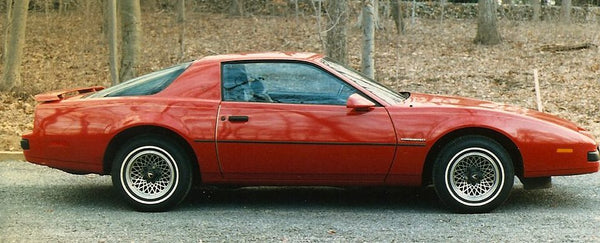
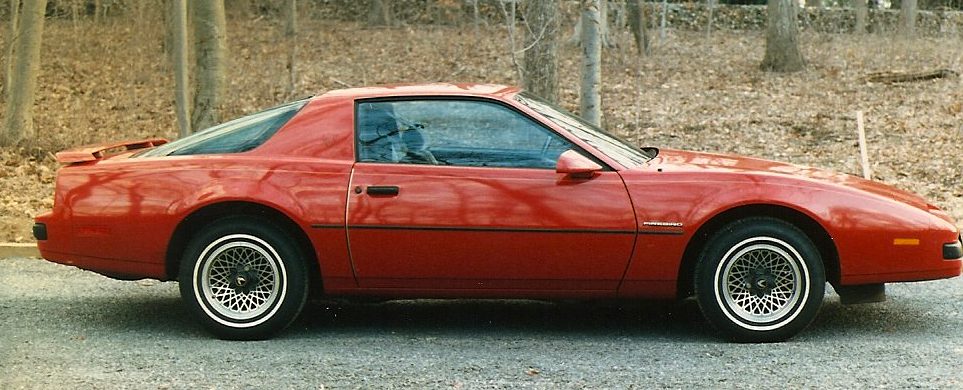
Confessions of a Setup Man, Part 10: No Direction Home
I was a shy kid. The fact that I was skinny, had big ears, a big nose and big teeth, developed psoriasis when I was 13 and probably wouldn’t have been Michelangelo’s first choice for a model might have had something to do with it. It took me a long time to become a more outgoing person. Playing the guitar helped.
By the time I was out of my teens though, I had become somewhat less-awkwardly proportioned and I started feeling a little more confident, but was no Tony Robbins. A certain lack of esteem remained when I started writing for The Absolute Sound in 1984. When I first met TAS founder Harry Pearson, the legendary HP, I could barely get any words out. When he hired me to work for him full-time as technical director in 1987, I had to figuratively pinch myself. Of all the people who would be qualified for the gig, why did he pick me? Surely there were dozens of more qualified people in the audio industry, which I wasn’t even a part of yet, really.
As I’ve mentioned previously in my tribute to Harry (in Issue 102), manufacturers would come to his house in Sea Cliff, NY and bring their latest components for evaluation. They were the top people in the high-end audio world and the stakes were high. After all, we had to uphold the reputation of being the arbiters of high-end audio equipment – and their wares were expected to deliver a cosmic listening experience. No pressure there.
After a few weeks on the job in the fall of 1987, with great excitement Harry informed me that Jeff Rowland of Jeff Rowland Design Group would be coming to visit and would be preceded by the arrival of the Coherence One preamp. This would be the first time that I would be meeting with an Audio Luminary. It would also be the first time that I would have to demonstrate my setup skills and knowledge to someone in the high-echelon of the industry. I felt excitement – soon overcome by extreme nervousness. I was going to meet a man who was an electronics wizard, a high-end audio company founder and a purveyor of equipment which I had never even touched before, let alone set up for a high-stakes listening session. The fact that I had no idea what he was like didn’t factor into my state of mind.
(What a magnificent piece of equipment the Coherence One was, an immaculately-built solid-state preamplifier that exuded quality, from its stunning gold-anodized faceplates to its soft-touch click switches and custom-machined knobs. You could place the preamp section directly on top of the power supply section and hear no hum.)

Fast forward a couple of weeks. As the day of Jeff’s visit approached, I grew more and more nervous; the shy-kid part of me ironically coming more and more to the forefront. The day before Jeff’s visit, Harry and I decided to have dinner at Kokura, his favorite sushi restaurant and scene of many a night’s revelry. I certainly felt in need of a calming drink. Or two. Or possibly more; I don’t remember. It was a cold, wet night after a rainy day. Harry drove; he always insisted on driving his Corvette, the Red Rocket, and making a grand entrance wherever he went.
By the time we’d returned to Sea Cliff, I needed a few hours to try to come down. I failed to hide my nervousness from Harry. I will give him credit; he assured me everything would be fine when he could have teased me, which would have been like shooting a proverbial fish in the barrel. Finally I wanted to go home. It was getting late and I had to be back at Harry’s in the morning. I got into my red 1985 Firebird, my pride and joy, and hit the road home.
And quickly got lost.
I had only been on the job for a few weeks and didn’t know the area well. Sea Cliff also rivals Boston in its Byzantine street layout. OK, the truth? I have a terrible sense of direction. If I make more than two quick turns in a row I get completely disoriented. And the streets were badly lit. It was fall and there were leaves all over the road and the ground, making it impossible to tell where the sides of the road ended and the ground began. I began to worry.
Then I made a right turn and…CLUNK!
The right front of my car pitched forward. What the? OK, I’ll just back up and get outta here. Except my car wouldn’t move. What the hell? I tried driving in forward and reverse and rocking the car. It wasn’t moving. I grabbed a flashlight, got out and looked.
I had driven my car into a ditch at the side of the road.
Because it had been raining, a layer of leaves was floating on top of the water-filled ditch, camouflaging its presence.
I got back in the car and tried to extricate it again, to no avail. Now I started to panic.
This was in the time before cell phones and I had absolutely no idea where I was. Sea Cliff is a small town, though, so I figured if I just got out of the car and walked I would quickly find the police station or fire department or someone whose phone I could use. I started walking. Five minutes. 10 minutes. 20 minutes. I wasn’t getting anywhere closer to town. So I thought I’d better get back to the car and knock on the door of someone’s house.
Except I had gotten even more lost and now I didn’t know where my car was! In my nervousness I hadn’t bothered to keep track of my surroundings. Now I was thinking I’d better just sit down somewhere until the morning, and then maybe I could find my way to help once it was light out.
I started walking again, not really knowing where, when I noticed the lights of a car behind me. A police car. Uh oh, now what? An officer got out and somewhat quizzically asked what I was doing. I explained, “I drove my car into a ditch and it’s stuck and I’m looking to find help.” He replied, “you mean that Firebird stuck at the side of the road about a mile back? We heard about that.” “YES, that’s the one!” “OK, get in the car and I’ll drive you to it.”
 Wish I still had that car. Photo taken circa 1985.
Wish I still had that car. Photo taken circa 1985.I complied and the officer asked, “Where’s the car?”
I thought for a second or two. “I don’t know.”
“Do you have any idea?”
“It’s around here somewhere!”
So, there I was, in a car with a police officer driving around at random. The one thing in my favor was that the officer didn’t think I was drunk, although I’m sure he did think I was an idiot. I certainly didn’t feel impaired – well, not blood-level impaired, anyway.
We saw lights up ahead on the right. The lights of a tow truck, pulling my beloved Firebird out of the ditch. I had to avert my eyes. “That your car?” asked the officer. “YES!” He pulled up, got out and talked to the tow truck driver, who proceeded to give me a look that could be charitably described as withering. Then the officer checked my license against the car’s registration, gave me a once-over and unceremoniously declared, “OK, you can go now.”
I shakily got in the car and slowly drove away, keeping the car in the middle of the road and relieved that I hadn’t been thrown in the clink for the night. I kept going straight until I found a main road with a direction sign and started driving towards my home, somehow eventually finding my way there. I caught a couple of hours of sleep and then drove back to Sea Cliff.
Gathering what shred of composure I could muster, I braced himself to meet Jeff Rowland, who I envisioned as an Audio Lord on High.
And met one of the nicest, warmest, friendliest people in high-end audio or anywhere. Jeff is a tall, soft-spoken man with an even disposition. When I told him I was so nervous at the prospect of meeting him that I had driven my car into a ditch the night before, he just gave me a puzzled look that seemed to ask, why would such a thought even go through my head?
Harry, of course, was laughing hysterically, utterly beside himself.
The rest of the day and evening went wonderfully. The Coherence One sounded superb – you’ll forgive me if I don’t remember the details of the rest of the system – sumptuous, authoritative, magnificent. The experience gave me the confidence boost I needed and the thought that, yeah, maybe I could really do this high-end audio thing.
Jeff Rowland and I have been friends ever since, although I don’t get to see him, or hear his gear, as often as I’d like.
And my Firebird? Not one scratch. Perhaps the leaves cushioned the blow. Or I just didn’t look that carefully.


Holiday Songs You Should Be Spinning!
Most people who know me well are familiar with the fact that I’m not a big fan of holiday music. Sure, the classics still work. But year after year, big stars release holiday albums that take advantage of the single biggest money grab in the business (next of course to covers albums). I’m unimpressed by most of them given their blatantly commercial nature. I think these records sell well because people are starved for something new that can break up the almost endless loop of the usual songs that get played non-stop throughout the season.
Well, in an effort to offer some relief to those who share my pain, here are 20 holiday songs done by rockers you may know, some you may have heard of, and some you can hear for the first time. They aren’t ranked; these are simply a collection of songs that I think work as both holiday songs and as all-around great rockers. Let me know what you think, and may some, if not all of these, help usher in the best holiday yet, especially in a year we would all like to put in the rear view mirror!
Julian Casablancas – “I Wish It Was Christmas Today”
The Strokes front man has developed a solid solo career that has revealed him to be the heart and soul of the band. This is as good a record as The Strokes have produced as a band. It’s got great energy and a somehow dignified punk sensibility that befits an established New York City rocker like Casablancas. You’ll swear you’re listening to The Strokes themselves and wonder why this song didn’t get more airplay.
Robert Earl Keen – “Merry Christmas From The Family”
Keen is a national treasure. His songs have been covered by everyone in the business. But outside of Texas, he doesn’t make much noise. This may be one of the funniest songs about the season. It’s a sing-along crowd favorite in concert. Even if you don’t dig the Austin scene or bristle at the sound of anything with a whiff of country, this song will make you smile.
Eels – “Everything’s Gonna Be Cool This Christmas”
Mark Oliver Everett, better known as Eels, has operated on the fringe of rock for years. His eclectic arrangements and quirky productions match the offbeat lyrics he brings to his music. But at its core his music rocks. This song reminds me of another Eels classic, “Saturday Morning.” Strong and sturdy, this is a keeper on any holiday playlist.
Dave Edmunds – “Run Rudolph Run”
It’s hard to compete with Chuck Berry. But Dave Edmunds does just that in his version of this classic. It’s all muscle. Edmunds delivers a real fat guitar sound and a rock-solid rhythm. Just straight four-to-the-floor rock and roll.
Yeah Yeah Yeahs – “All I Want For Christmas”
I can’t say that I’ve been a huge fan of this NYC trio, but this song could change things. Mariah Carey’s version of this song nearly killed it for me. Somehow the YYYs bring it back to life and offer a real sense of fun – the kind holiday songs are supposed to have. It makes me wonder what this song would sound like if Blondie did it.
Florence + The Machine – “Last Christmas”
There’s no questioning the power of Florence Welch’s voice. Here, on their version of the 1980s Wham hit, she is on full display. The band completely pulls back and she slows the song down and turns it into a real torch. This is as brilliant as the North Star!
The Ramones – “Merry Christmas (I Don’t Want To Fight Tonight)”
This is probably the most recognized song on the list. I’m not sure why I don’t hear it more often. It’s true to the band’s sound and to their entire body of work and sounds as fresh today as it did upon release.
The Reindeer Section – “You Are My Joy”
The Reindeer Section are a super group formed by Gary Lightbody of Scottish band Snow Patrol. They came together almost by chance and it’s unclear if they will work together in the future. But this single made a lot of noise for good reason. If it sounds familiar it may be because it was used in the soundtracks of Grey’s Anatomy, and on the fourth season of Queer as Folk.
Shurman – “Tomorrow Is Christmas Day”
This is an acoustic version of a song Shurman previously recorded in the studio with the full band. The group is from Austin and tours regularly with Blues Traveler. It’s a solid approachable song by a talented bunch of real road hounds.
Gary U.S. Bonds – “Christmas Is On”
I love that Gary U.S. Bonds still tours, still records. His trademark sound hasn’t changed at all over the last 50 years. This song and the record on which it appears offer the same kind of hop that made “This Little Girl” soar as high as it did when it was first released almost forty years ago.
The Raveonettes – “The Christmas Song”
This Danish duo put forward one of the best songs on this list. It’s got this terrific Roy Orbison sound. I can almost hear Bruce Springsteen laying down a version of this song. It’s rock solid, and as it builds, the Raveonettes maintain a mesmerizing vocal presence. And frankly the guitar work is just fantastic. Start to finish, a work of perfection.
Death Cab for Cutie – “Christmas (Baby Please Come Home)”
Ben Gibbard delivers a very interesting version of this song. It’s soft, delicate, and sparse. This is a song I never thought I needed to hear again. Gibbard shows here why I was wrong.
Clap Your Hands Say Yeah – “In This Home On Ice”
This song is as 1980s new wave as anything else Clap has put down. Again, here’s a song that isn’t heavy-handed with holiday trimmings. You have to look hard into the lyrics to find the connection. It instead stands firm on solid songwriting and musicianship. It’s also a perfect highway song if ever I’ve heard one.
Band Of Horses – “The First Song”
This isn’t often thought of as a Christmas song. Maybe that’s because there are no sleigh bells in the background. But the lyrics are all about Christmas and the season. It’s also among the band’s best – hands down.
Fireflies – “X-Mas Song”
Sadly, Fireflies are no longer together, but when they were making music they were often compared to Bowie and the Flaming Lips. To me they sound more like The Byrds and The Mamas & The Papas. This is a lazy atmospheric song that’s short and simple but somehow hard to ignore.
Galaxie 500 – “Listen, The Snow Is Falling”
This is what I call old school. These guys were making music in the late 1980s and early 1990s and at the time were often considered a modern-day Velvet Underground. The song starts small and builds slowly. It’s amazing that this Harvard-based trio didn’t get more traction on the indie scene. Stay with it. Don’t jump off the song until you have heard it rock out into total psychedelia. This is a keeper. Real hot!
Best Coast and Wavves – “I’ve Got Something For You”
These two bands got together and put out the quintessential beach song for the holidays. It drips with Beach Boys and Jan and Dean vibes. Here’s hoping they collaborate more often. This really works.
Darker My Love – “Snow Is Falling”
Darker My Love is an LA-based band. Their music has a Tom Petty meets post-punk sound, with hints of Band of Horses. It’s an interesting song with a lot of subtle production tricks that add just the right seasoning.
Ryan Adams – “Hey Parker, It’s Christmas”
In my opinion this is the perfect song to close out the list. It’s a very small and intimate piece of work, anchored mostly by a lazy piano. Yet it’s complex in other ways. I’m a sucker for almost everything Adams does so maybe I’m too quick to call it a classic. You be the judge, but time and again with songs like this I begin to see Adams as a modern-day Tom Waits, uniquely at ease in telling the troubled tales of what may seem like forgettable characters at first, until you realize the depth of the songs.
Header image of Florence + the Machine courtesy of Wikimedia Commons/brendenmendez.




